The Project Gutenberg eBook of Ecological Studies of the Timber Wolf in Northeastern Minnesota
most other parts of the world at no cost and with almost no restrictions
whatsoever. You may copy it, give it away or re-use it under the terms
of the Project Gutenberg License included with this ebook or online
at www.gutenberg.org. If you are not located in the United States,
you will have to check the laws of the country where you are located
before using this eBook.
Title: Ecological Studies of the Timber Wolf in Northeastern Minnesota
Author: L. David Mech
Louis Daniel Frenzel
P. D. Karns
Robert R. Ream
John W. Winship
Release date: October 2, 2011 [eBook #37595]
Most recently updated: January 8, 2021
Language: English
Credits: Produced by Chris Curnow, Joseph Cooper, Diane Monico, and
the Online Distributed Proofreading Team at
https://www.pgdp.net
*** START OF THE PROJECT GUTENBERG EBOOK ECOLOGICAL STUDIES OF THE TIMBER WOLF IN NORTHEASTERN MINNESOTA ***

USDA FOREST SERVICE
RESEARCH PAPER NC-52
1971
Ecological
Studies of the
TIMBER
WOLF
in
Northeastern
Minnesota
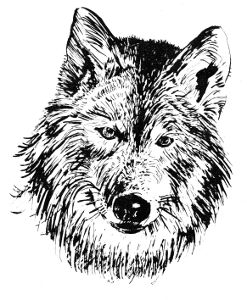
NORTH CENTRAL FOREST EXPERIMENT STATION
FOREST SERVICE
U. S. DEPARTMENT OF AGRICULTURE
FOREWORD
The largest population of timber wolves remaining in the United States
(excluding Alaska) lives in northern Minnesota. Many of these wolves inhabit
the Superior National Forest, so protecting the habitat of this endangered
species is largely a Forest Service responsibility.
As the "Age of Ecology" broadens into the 1970's, wolves and wolf habitat
will become a subject of concerted research. Forest land managers will have
to know more about how the timber wolf fits into a forest system. Building
on nearly 50 years of research in northern forests, we at the North Central
Station intend to expand our studies of wildlife habitat. We are happy to
publish the enclosed papers as one step in this direction.
D. B. King, Director
North Central Forest Experiment Station
D. B. King, Director
Forest Service—U.S. Department of Agriculture
Folwell Avenue
St. Paul, Minnesota 55101
ECOLOGICAL STUDIES OF THE TIMBER WOLF
IN NORTHEASTERN MINNESOTA
L. David Mech and L. D. Frenzel, Jr. (Editors)
CONTENTS
| Movements, Behavior, and Ecology of Timber Wolves in Northeastern Minnesota L. David Mech, L. D. Frenzel, Jr., Robert R. Ream, and John W. Winship | 1 |
| An Analysis of the Age, Sex, and Condition of Deer Killed by Wolves in Northeastern Minnesota L. David Mech and L. D. Frenzel, Jr. | 35 |
| The Effect of Snow Conditions on the Vulnerability of White-Tailed Deer to Wolf Predation L. David Mech, L. D. Frenzel, Jr., and P. D. Karns | 51 |
| The Possible Occurrence of the Great Plains Wolf in Northeastern Minnesota L. David Mech and L. D. Frenzel, Jr. | 60 |
THE AUTHORS
Dr. Mech, formerly with the Department of Biology, Macalester College,
St. Paul, Minnesota, is now employed by the U.S. Bureau of Sport Fisheries
and Wildlife, Twin Cities, Minnesota.
Dr. Frenzel, formerly with the Department of Biology, Macalester College,
St. Paul, Minnesota, is now employed by the Department of Entomology,
Fisheries, and Wildlife, University of Minnesota, St. Paul, Minnesota.
Dr. Ream, formerly with the North Central Forest Experiment Station
(maintained in cooperation with the University of Minnesota), Forest Service,
U.S. Department of Agriculture, is now employed by the School of Forestry,
University of Montana, Missoula, Montana.
Mr. Winship is with the U.S. Bureau of Sport Fisheries and Wildlife,
Twin Cities, Minnesota.
Mr. Karns is with the Minnesota Department of Conservation, Forest
Lake, Minnesota.
For sale by the Superintendent of Documents, U.S. Government Printing Office, Washington, D.C. 20402
[Pg 1]
MOVEMENTS, BEHAVIOR, AND ECOLOGY OF TIMBER WOLVES
IN NORTHEASTERN MINNESOTA
L. David Mech, L. D. Frenzel, Jr.,
Robert R. Ream, and John W. Winship
The largest population of wolves (Canis
lupus) remaining today in the continental United
States outside of Alaska is in northern Minnesota.
As of mid-1970 this population was not
legally protected, and the species, which once
ranged over almost all of North America, is now
considered by the U.S. Department of the Interior
to be in danger of extinction in the contiguous
48 States. Until the present research, the
only field studies of Minnesota wolves were those
of Olson (1938 a, b) and Stenlund (1955). Those
investigations provided much useful general information
about Minnesota wolves and gave the
present authors an excellent background with
which to begin more detailed investigations.
This paper reports on the basic aspects of a
series of studies that began in 1964, and concentrates
primarily on wolf movements and activity,
social behavior, hunting behavior, and population
organization. Most of the data were collected
during January, February, and March 1967; February,
November, and December 1968; and January
through August 1969. A total of 192 days
was spent in the field.
According to a distribution map of wolf subspecies
(Goldman 1944), the race of wolves in
our study area is Canis lupus lycaon. However,
evidence presented by Mech and Frenzel (see
page 60) suggests that there may be strong
influence by C. l. nubilus, a more western race
of wolf formerly thought to be extinct (Goldman
1944).
Between 1965 and the present, wolves in the
study area were neither protected nor bountied,
and the influence of trapping and hunting is
thought to have been negligible.
THE STUDY AREA
This study was conducted in the Superior
National Forest (fig. 1) in northern St. Louis,
Lake, and Cook Counties of northeastern Minnesota
(92° west longitude, 48° north latitude),
an area well described by Stenlund (1955). Most
of the data were collected from within and immediately
south of the Boundary Waters Canoe
Area, a special wilderness region in which travel
by motorized vehicles is restricted. The total
study area encompasses approximately 1.5 million
acres, and numerous lakes and rivers comprise
about 15 percent of this area (fig. 2). The
topography varies from large stretches of swamps
to rocky ridges, with altitudes ranging from 1,000
to 2,300 feet above sea level (fig. 3). Winter
temperatures lower than -30° F. are not unusual,
and snow depths generally range from 20 to 30
inches on the level. However, an important exception
occurred in early 1969 when depths of
45 inches and more accumulated in much of the
area. Further details on snow conditions in the
study area during the period of this investigation
are given by Mech et al. (see page 51). Conifers
predominate in the forest overstory, with the
following species present: jack pine (Pinus banksiana
Lamb.), white pine (P. strobus L.), red
pine (P. resinosa Ait.), black spruce (Picea mariana
(Mill.) B.S.P.), white spruce (P. glauca
(Moench) Voss), balsam fir (Abies balsamea
(L.) Mill.), white cedar (Thuja occidentalis L.),
and tamarack (Larix laricina (DuRoi) K. Koch).
However, as a result of extensive cutting and
fires much of the conifer cover is interspersed
with large stands of white birch (Betula papyrifera
Marsh.) and aspen (Populus tremuloides
Michx.). Detailed descriptions of the forest vegetation
were presented by Ohmann and Ream
(1969).
[Pg 2]

Figure 1 (left half)—Map of the study area.
(Click for larger image.)
[Pg 3]

Figure 1 (right half)—Map of the study area.
BOUNDARY WATERS CANOE AREA SUPERIOR NATIONAL FOREST
(Click for larger image.)
[Pg 4]
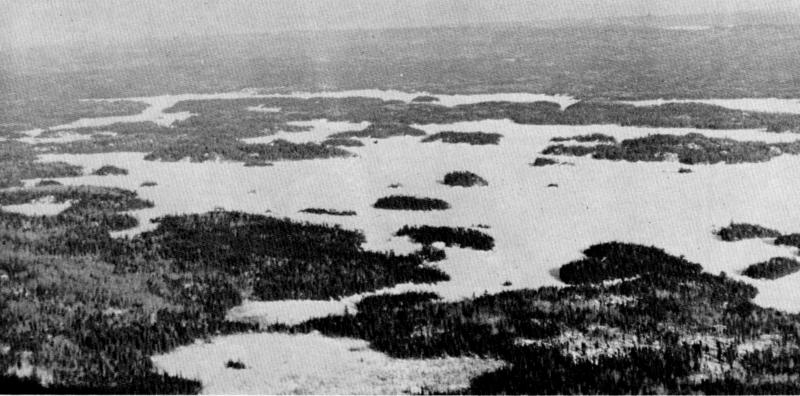
Figure 2.—Lakes are common throughout most of the study area.
(Photo courtesy of L. D. Mech.)
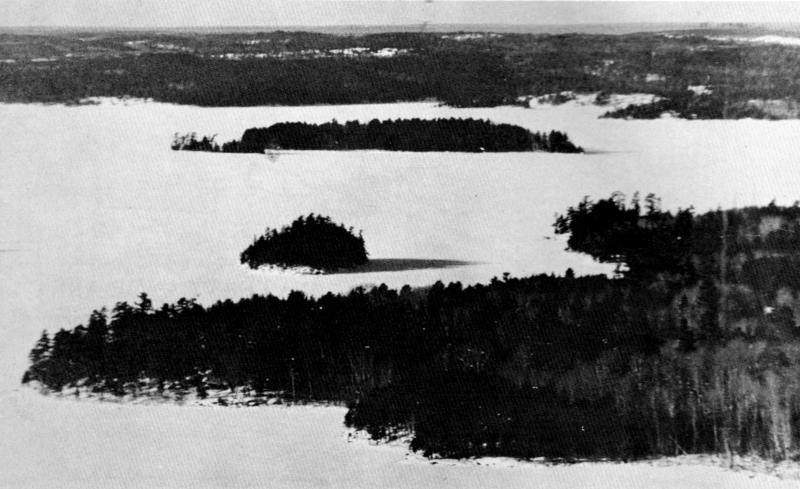
Figure 3.—Ridges, islands, swamps, and bays are part of the variable topography
in the Superior National Forest. (Photo courtesy of L. D. Mech.)
[Pg 5]
METHODS
The observations discussed in this paper were
all made from aircraft, the method of flying being
that reported by Burkholder (1959) and Mech
(1966a). The following aircraft were used (in
order of size): Aeronca Champ,[1] Supercub, Cessna
172, Cessna 180, and Cessna 206. The smaller
aircraft were excellent for holding in tight circles
during observations but had the disadvantage
of being slow and cold; the larger planes could
cover the study area much more quickly and
were more comfortable, but were not as maneuverable
during observations. For radiotracking,
to be discussed below, the best compromise
seemed to be a Cessna 172.
To make observations of wolves, we flew over
frozen waterways until tracks were found, and
then followed the tracks until we lost them or
saw the wolves (fig. 4). Several times we located
wolves directly just by scanning the lakes. However,
because there seemed to be a number of
packs in the area, and because most wolves were
the same color (with the exception of a few black
or white individuals) (see Mech and Frenzel,
page 60), it usually was not possible to follow
packs from one day to the next and be
certain of identification. Moreover, it was impossible
to locate any pack at will because most
wolves also spent much time inland.

Figure 4.—An important technique used in the study involved aerial tracking
and observing of wolf packs. (Photo courtesy of L. D. Frenzel.)
Therefore, to facilitate our observations and
to obtain data on wolf movements and extent of
range, we began a radiotracking program in 1968-69.
A professional trapper, Robert Himes, was
employed to capture the wolves. Using Newhouse
No. 4 and 14 steel traps at scent-post sets,
he caught two wolves, and captured another with
a live-snare similar to that used by Nellis (1968);
the senior author trapped two additional wolves
(fig. 5).
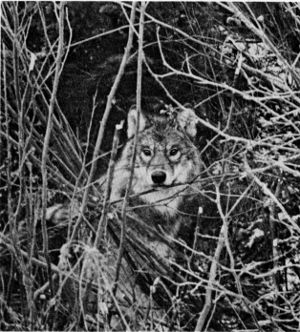
Figure 5.—A wolf caught in a trap. (Photo courtesy
of D. L. Breneman.)
The four wolves held in steel traps were
restrained by a choker (fig. 6), and then anesthetized
by intramuscular injections (fig. 7A, B)
of a combination of 30 mg. of phencyclidine hydrochloride
(Sernylan, Parke-Davis Co.) and 25
mg. promazine hydrochloride (Sparine, Wyeth
Laboratories) as prescribed by Seal and Erickson
(1969); these drugs proved most satisfactory.
[Pg 6]
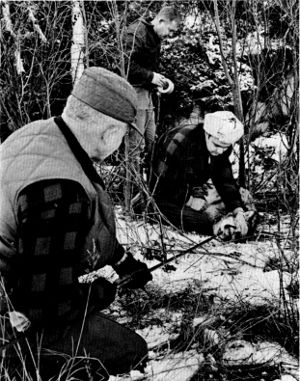
Figure 6.—A choker was used to restrain wolves
caught in traps. (Photo courtesy of D. L.
Breneman.)
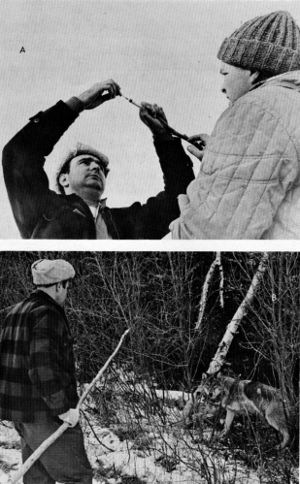
Figure 7.—A. A small hypodermic syringe is loaded
with drugs. B. The loaded syringe is used on
the end of a pole. (Photos courtesy of D. L.
Breneman.)
The fifth wolf (a female), which was captured
around the chest by the live-snare, was
handled without drugs. A forked stick was used
to hold down her head (Kolenosky and Johnston
1967), and she offered no resistance (fig. 8).
Evidently she went into shock or some other
psychophysiological state of unconsciousness, for
after her release she remained on her side and
did not move for 1.5 hours, despite our prodding
during the first few minutes (fig. 9). Then suddenly
she leaped up and ran off.[Pg 7]

Figure 8.—Once pinned by the forked stick, the
wolf ceased struggling. (Photo courtesy of
Richard Bend.)

Figure 9.—After release, the wolf lay still for 1½
hours before jumping up and running off.
(Photo courtesy of L. D. Mech.)
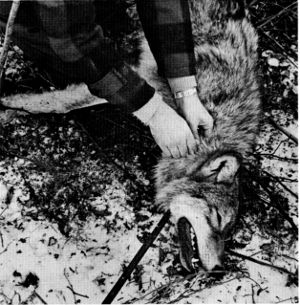
Figure 10.—A radio transmitter collar was placed
around the neck of each trapped wolf. (Photo
courtesy of D. L. Breneman.)

Figure 11.—Each ear of the wolf was tagged with
identifying numbers. (Photo courtesy of Richard
Bend.)
Each wolf was examined, outfitted with a
radio transmitter collar 15 inches inside circumference
(fig. 10) and tagged with identification
numbers in both ears (fig. 11). Each transmitter
was of a different frequency in the 150 MHz
range, emitted a pulsed signal ranging from 75
to 350 pulses per minute, and had a calculated
life of at least 300 days (fig. 12). Two types of[Pg 8]
12-inch whip antennas were used on the transmitters:
one type extended up the side of the
collar and then stuck out above for 6 inches; the
other was fully attached inside the collar and
extended up one side, around the top, and partly
down the other side. The transmitter, batteries,
and antenna were molded into a collar of acrylic
weighing 11 ounces (Mech et al. 1965).[2] All
radio equipment functioned flawlessly for at least
5 months, and one transmitter continued operating
for at least 9 months.
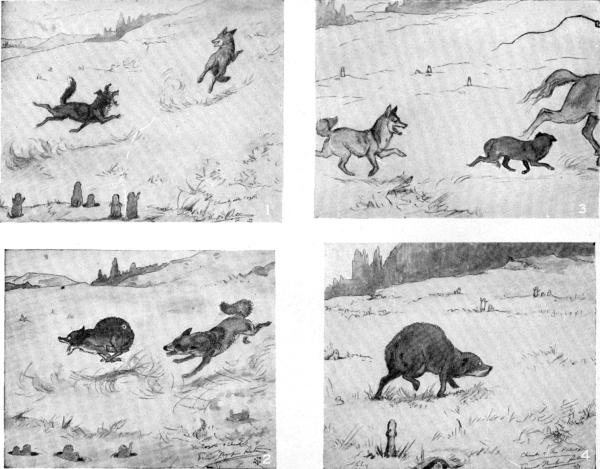
Figure 12.—Each radio collar had a different
frequency tuned to special receivers, which allowed
each wolf to be identified. (Photo courtesy
of D. L. Breneman.)
For tracking radio-equipped wolves, a directional
yagi antenna (fig. 13) was attached to
each of the wing struts of an aircraft and connected
inside to a portable receiver. The usual
tracking technique was to fly at 1,500 to 3,000
feet elevation to the last known location of the
wolf being sought (fig. 14). If a signal was not
obtained at that point, the aircraft spiraled upward
until the signal was found or until 10,000
feet altitude had been reached. If the signal still
was not heard, a search pattern was flown at
10,000 feet. The range of the signal from this
altitude was 15 to 35 miles; at 3,000 feet it was
10 to 15 miles. Collars with antennas molded
fully inside gave only about two-thirds the range
of those protruding partly, but could be expected
to last longer because the antennas could
not break off. It is unknown whether any protruding
antennas did break during the study,
but on January 5, 1970, one wolf was recaptured,
and its antenna had broken.
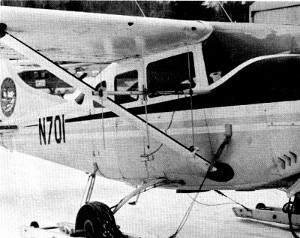
Figure 13.—Directional yagi antennas fastened
to the wing struts of the aircraft were necessary
to "home in" on the wolves. (Photo
courtesy of U.S. Bureau of Sport Fisheries
and Wildlife.)
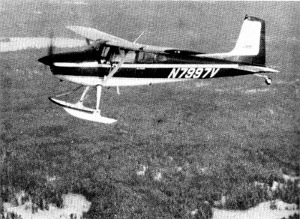
Figure 14.—The tracking aircraft was usually
flown at altitudes of 1,500 to 3,000 feet. (Photo
courtesy of Dick Shank.)
[Pg 9]
When a signal was received, the aircraft was
headed in the approximate direction of the source
until the signal strength reached a peak; a 90°
turn was then made in the direction the signal
seemed the strongest. A series of these maneuvers
soon narrowed the area to the point where
visual search was possible. After practice and
experience with this technique, we could locate
the approximate source of the signal within 10
to 30 minutes after first receiving it.
Even though the radiotagged wolves spent
most of their time inland, often in stands of
conifers, they were frequently observed from the
aircraft. The technique was to circle at 300 to
800 feet altitude around a radius of a quarter
mile from the point where the strongest signal
emanated. From December through April, 65 percent
of the wolves located by radio were sighted;
the rate was much higher for more experienced
personnel. A pack of five wolves that was
tracked was seen 31 times out of 33 attempts
during February and March.
Whenever wolves were located, radiotagged
or not, observations were made from an altitude
that did not disturb them. Packs varied in the
concern shown the aircraft, but only one or two
ran from it. The radiotagged wolves, and a pack
of 10 to 13 animals, were habituated to the
aircraft and usually could be observed from
altitudes of 500 feet and less without disturbance
(fig. 15).
Almost all the radiotracking was done from
aircraft, but when inclement weather prevented
flying, some attempts from the ground succeeded
when wolves were close enough to roads. The
usual range on the ground was 0.75 to 1.50
miles. One wolf was approached to within 35 feet
through radiotracking.

Figure 15.—The wolves studied soon became accustomed to the aircraft and
could then be observed during their natural activity. (Photo courtesy of
L. D. Mech.)
FOOTNOTES:
[1] Mention of trade names does not constitute endorsement by the USDA
Forest Service.
[2] The acrylic collar was fashioned by the Davidson Co., Minneapolis,
Minnesota, which also produced some of the transmitters. Other
transmitters and two radio receivers were manufactured by the AVM
Instrument Co., Champaign, Illinois.
RESULTS AND OBSERVATIONS
Aerial observations made during this study
involved 490 hours distributed as follows: January,
February, March 1967—124 hours; February
1968—10 hours; December 1968 through
August 1969—356 hours. Seventy-seven observations
involving a total of 323 wolves were
made (table 1), excluding animals located
through radiotracking.
One male and four female wolves were radiotagged,
and they and their associates were followed
intermittently for periods of 5 to 8 months
(table 2). All except one initially suffered some
injury to a foot. Three of these animals were
seen limping, but only in one case was the limp
judged extreme enough to have significantly affected
the movements or behavior of the animal.
In that one case, the wolf (No. 1057) was caught
in a steel trap on an extremely cold night, and
her foot froze. After that she was often seen
hopping on three legs. She was not able to keep
up with her pack, which consisted of 10 to 13
members, and her movements were much restricted
compared with those of other wolves. However,
she was frequently observed feeding on
fresh kills, and may even have made them
herself.
[Pg 10]
Table 1.—Sizes of wolf population units observed in northeastern
Minnesota
| Population unit[3] (number of wolves) | Wolf observations | |||||||
|---|---|---|---|---|---|---|---|---|
| Winter 1966-67 | Winter 1968-69 | Total | Winters[4] 1948-53 | |||||
| Number | Percent | Number | Percent | Number | Percent | Number | Percent | |
| 1 | 8 | 31 | 17 | 33 | 25 | 32 | 48 | 43 |
| 2 | 3 | 12 | 6 | 12 | 9 | 12 | 24 | 22 |
| 3 | 3 | 12 | 2 | 4 | 5 | 6 | 7 | 6 |
| 4 | — | — | 7 | 14 | 7 | 9 | 7 | 6 |
| 5 | 2 | 7 | 4 | 8 | 6 | 8 | 8 | 7 |
| 6 | 3 | 12 | 4 | 8 | 7 | 9 | 7 | 6 |
| 7 | 2 | 7 | 1 | 2 | 3 | 4 | 4 | 4 |
| 8 | 3 | 12 | 3 | 6 | 6 | 8 | 3 | 3 |
| 9 | — | — | 2 | 4 | 2 | 3 | 3 | 3 |
| 10 | 2 | 7 | 2 | 4 | 4 | 5 | — | — |
| 11 | — | — | — | — | — | — | — | — |
| 12 | — | — | 1 | 2 | 1 | 1 | 1 | 1 |
| 13 | — | — | 2 | 4 | 2 | 3 | — | — |
| Total number of wolves | 109 | — | 214 | — | 323 | — | 318 | — |
| Total number of observations | 26 | — | 51 | — | 77 | — | 112 | — |
| Mean population unit size | 4.2 | — | 4.2 | — | 4.2 | — | 2.8 | — |
FOOTNOTES:
[3] Because wolf packs sometimes split temporarily, these figures may
not strictly represent actual pack sizes; nevertheless they should
provide reasonably accurate approximations.
[4] From Stenlund (1955).
Table 2.—Background information on five radiotagged wolves studied in northeastern Minnesota
| Wolf | Estimated weight[5] (pounds) | Usual associations | Location captured | Date captured | Last date located | Days located | General condition | |
|---|---|---|---|---|---|---|---|---|
| Number | Sex | |||||||
| Number | ||||||||
| 1051 | M | 75 | None[6] | T62N-R7W-S18 | Nov. 27/68 | Apr. 24/69 | 84 | Good, but two toes frozen in trap; animal limped lightly for 5-6 wks. |
| 1053 | F | 60 | None | T62N-R8W-S13 | Dec. 10/68 | Aug. 29/69 | 72 | Thin; top of foot cut in trap but no broken bones or frozen toes; limped for at least 10 wks. |
| 1055 | F | 60 | Another wolf intermittently | T61N-R10W-S26 | Jan. 5/69 | May 30/69 | 65 | Thin; two toes lightly frozen; no limp ever noticed. |
| 1057 | F | 60 | Pack of 13[7] | T66N-R5W-S33 | Jan. 8/69 | Apr. 24/69 | 47 | Thin; front foot frozen in trap; lost use of foot and could not stay with pack. |
| 1059 | F | 65 | Pack of 5 | T62N-R11W-S26 | Jan. 22/69 | Aug. 29/69 | 51 | Good but thin; captured in snare; no apparent injury. |
FOOTNOTES:
[5] Wolf 1059, when killed by a trapper on January 10, 1970, appeared
to be of the same size and condition as when radiotagged; she only
weighed 53 pounds, however, indicating that probably all the weights
are overestimated.
[6] Tracks of a pack of at least two other wolves came by trap where
1051 was caught; however, there was never any other indication that
1051 may have been a member of a pack.
[7] A frozen foot prevented 1057 from staying with her pack; but she
did associate with other wolves intermittently and with the whole pack
when it came by her restricted area.
The precise ages of the radiotagged wolves
were unknown. All individuals, however, had
sharp unworn teeth, indicating that they were[Pg 11]
all relatively young. No. 1051, the only male
studied, had testes 2.0 cm. long and 1.5 cm. wide;
their volume therefore would be less than 4.5 cc.
The small size of these testes, compared with the
7 to 28 cc. reported by Fuller and Novakowski
(1955) as the volume of the testes from wolves
taken during fall, would indicate that 1051 had
not yet matured. Since the animal's testes and
canine lengths were considerably greater than
those of pups caught in a later study, we presume
1051 was 18 or 30 months old.
Two of the females, No. 1055 and No. 1059,
both captured in January, had vulvas that
seemed to be beginning to swell. No. 1059 was
killed by a trapper about a year later, on January
10, 1970, and an examination revealed that she
had bred in 1969 and carried five fetuses. Sectioning
her incisors and reading the apparent annulations
indicated that she probably was 3+
or 4+ years old.[8]
Three of the wolves were basically lone individuals.
One of these, No. 1051, was captured on
a night when tracks of at least two other wolves
came by the trap, and this could mean that he
had been part of a pack. However, it is also
possible that these were merely tracks of non-associated
wolves that were also traveling
through the area. In any case, 1051 was not
seen associating with any other wolf until 4
months after he was caught, and even then the
association seemed to be temporary and casual.
It could be argued that capture, handling by
humans, or wearing a collar prevented him from
regaining old associations or making new ones.
However, the wolves radiotagged by Kolenosky
and Johnston (1967) were quickly accepted back
into their packs, and so were two of ours. Thus
we conclude that 1051 probably was a lone wolf
when captured.
When 1053 was trapped, her tracks were
the only ones in the area, and she was never seen
closely associating with another wolf. No. 1055
probably was with another wolf when captured,
as evidenced by tracks. About a month after
she was radiotagged she associated with another
wolf intermittently for about 2 weeks, after
which she was only seen alone.
No. 1057 and No. 1059 were both members
of packs. No. 1057 was captured during the night
after a pack of 13 wolves was seen heading
toward the area; 5 days later she was seen with
10 other wolves, which no doubt represented this
same pack. This wolf's association with the pack
was interrupted, however, because of the foot
injury sustained during capture. When 1059 was
caught, tracks of two other wolves were seen
in the immediate vicinity, and one of the animals
was seen within a quarter mile of the trapped
wolf. Three days after 1059's release, and perhaps
sooner, she was back with her pack, with
which she remained at least through March.
The detailed histories of the associations of
the radiotagged wolves will be discussed in a
later section.
Radiotagged wolves were tracked every day
that weather permitted during December, January,
and February; every week during March,
April, and May; and once a month during June,
July, and August (fig. 16). Information was
obtained for a total of 570 "wolf-days"—a
wolf-day being a day in which one radiotagged
wolf was located; a pack of five being located
for 1 day would constitute 5 wolf-days.

Figure 16.—Distribution of the days on which data were obtained for each
of the radiotagged wolves. Because tracking success was 99 percent, this
also represents the distribution of effort. During June, July, and August,
wolves 1053 and 1059 were located 1 day each month.
The last day that animals 1051 and 1057
were heard from was April 24, 1969. Both had
traveled long distances during the previous
week and may have moved out of range. Signals
from wolf 1055 were last heard on May 30; this
animal had also been ranging widely. Circles
with radii of at least 50 miles around the last
known locations of each wolf were searched unsuccessfully
for the signals. During all subsequent
tracking nights for the remaining wolves,
the missing animals were also sought, but to no
avail. Before the last dates that signals from
these animals were heard, attempts to locate
marked animals from the air had failed in only
three instances.
FOOTNOTES:
[8] David W. Kuehn, Personal correspondence to L. D. Mech, 1970.
Daytime Activity Patterns
When radiotagged wolves were located, notes
were kept on the type of activity they were engaged
in; the results are summarized in figure 17.
In a total of 171 observations made between 9:00
a.m. and 6:00 p.m., the wolves were resting 62
percent of the time, traveling 28 percent and
feeding 10 percent. They tended to travel more[Pg 12]
before 11:00 a.m. and after 3:00 p.m., although
resting still composed at least 45 percent of the
activity during every hour (fig. 18).
These results generally agree with the statement
by Mech (1966a) that wolves on nearby
Isle Royale tend to rest about 11:00 a.m. and
begin traveling again about 4:00 p.m. However,
it does appear that the Minnesota wolves spend
much more of the day resting than do the Isle
Royale animals. The difference may be caused
by the difference in pack sizes studied. The Isle
Royale pack of 15 to 16 may have had to travel
more to find enough food to feed all its members
than did the lone wolves and pack of five in the
present study.
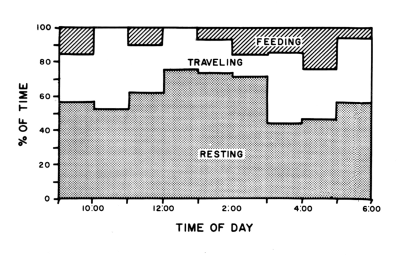
Figure 17.—Percentage of time spent by radiotagged
wolves in various types of activity
throughout the day, from December through
April.
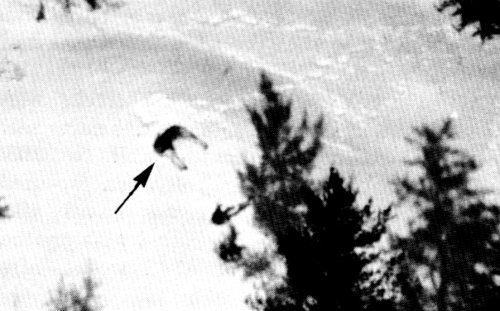
Figure 18.—Generally the wolves rested during
most of the day. (Photo courtesy of L. D.
Mech.)
[Pg 13]
Movements and Range
Wolf movement is greatly hindered by deep,
soft snow, so during winter travel, wolves frequently
use areas where they sink into the snow
the least. In our study area, frozen waterways
are used extensively where possible, just as reported
by Stenlund (1955). Where few lakes
or rivers exist, wolves follow railroad beds and
logging roads, often soon after a plow or other
vehicle has driven on them. In cutting cross
country through deep snow, wolves travel single
file and tend to stick to windblown ridges and to
trails of deer and moose. Wolves that have ranges
small enough to cover in a few days form a
network of their own trails, which they can
maintain merely by traveling regularly over them.
Packs on Isle Royale depended a great deal
on such a system of trails (Mech 1966a), and
so did Pack No. 1059 in our study area.
Wolf packs can travel up to 45 miles in a
day but it is usually larger packs that do so
(Stenlund 1955, Burkholder 1959, Mech 1966a,
Pimlott et al. 1969). In our study area we sometimes
saw evidence of long moves by large packs
along strings of lakes and waterways. However,
most of our movement data pertain to lone
wolves and a pack of five. The daily travel of
these animals was usually much less than that
reported for large packs.
Our radiotracking data provide an index to
the extent of travel for each wolf rather than the
actual amount of travel, for it is based on straight
line distances between consecutive points at
which an animal was found. This measure will
be referred to as the "net daily distance."
Much variation was found in the net daily
distances of wolves, with the longest ranging
from 4.5 miles for 1057 to 12.8 for 1055 (table 3).
The mean net daily distance for each animal,
excluding days with no net movement, varied
from 1.5 to 3.6 miles. The movements of these
wolves may have been affected by the snow depth
and penetrability, for mean and maximum net
daily distances suddenly increased for all animals
between February 23 and 28, when snow penetrability
had decreased to a point where walking
wolves would be expected to sink in only about
6 inches (table 4).
Other possible explanations
for the wolves' sudden increase in movements
will be discussed below.
The straight line distances traveled between
consecutive weekly locations (called the "net
weekly distances") showed a similar variation
(table 3). The maximum net weekly distance
for each wolf varied from 4.6 miles for 1059 to
49.0 for 1055, with means ranging from 2.9 to
15.6 miles for the same wolves. No doubt 1059's
net weekly distances were relatively short because
her total range and that of her pack were
much smaller than those of the other wolves.
It is difficult to obtain comparable measures
of the extent of the ranges covered by each of
the radiotagged wolves because their patterns
of travel varied so much. Thus the figures given
in table 5 should be regarded only as gross indicators
of the minimum range of each animal.
The area figures are especially deceiving in the
case of 1055, for she had a horseshoe-shaped
range, much of which apparently was not used.
Table 3.—Straight line distances (miles) between consecutive locations of radiotagged wolves
| Wolf number | Net daily distances | Net weekly distances | |||||||||
|---|---|---|---|---|---|---|---|---|---|---|---|
| Days data obtained | Days no net movement | Days movement | Mean net distance per day | Mean net distance per day excluding days of no movement | Range | Weeks data | Mean net distance per week | Range | |||
| Number | Number | Percent | Number | Percent | Miles | Miles | Miles | Number | Miles | Miles | |
| 1051 | 54 | 13 | 24 | 41 | 76 | 2.0 | 2.6 | 0.0-12.0 | 22 | 12.7 | 1.0-46.0 |
| 1053 | 37 | 20 | 54 | 17 | 46 | 1.0 | 2.1 | 0.0-05.0 | 23 | 6.3 | 0.0-23.6 |
| 1055 | 46 | 7 | 15 | 39 | 85 | 2.9 | 3.6 | 0.0-12.8 | 21 | 15.6 | 1.7-49.0 |
| 1057 | 29 | 11 | 38 | 18 | 62 | 1.0 | 1.5 | 0.0-04.5 | 15 | 4.6 | 0.0-31.0 |
| 1059 | 26 | 1 | 4 | 25 | 96 | 2.5 | 2.6 | 0.0-05.6 | 18 | 2.9 | 0.0-04.6 |
[Pg 14]
Nevertheless, one major piece of information
is obvious from the figures: 1059's pack of five
wolves had a much smaller range than any of the
other uninjured animals—approximately 43
square miles when figured by the minimum-area
method (Mohr 1947). The next smallest range
was that of 1051 (excluding the area of his later
dispersal—see below), which was some seven
times the size of the pack's range.
Table 4.—Straight line distances (miles) traveled
between consecutive days ("net daily distance")
by radiotagged wolves in northeastern
Minnesota during February 1969
| Wolf number | Mean net daily distance | Greatest net daily distance | ||
|---|---|---|---|---|
| Feb. 1-23 | Feb. 23-28 | Feb. 1-23 | Feb. 23-28 | |
| 1051 | 1.1 | 3.5 | 2.3 | 4.8 |
| 1053 | 0.7 | 2.5 | 3.0 | 5.0 |
| 1055 | 2.7 | 6.2 | 8.0 | 12.8 |
| 1057 | 1.0 | 1.5 | 4.0 | 4.5 |
| 1059 | 2.2 | 3.1 | 4.0 | 5.6 |
There is little published information on the
movements and ranges of lone wolves with which
to compare our data. Mech (1970) summarized
information regarding ranges of packs. Reported
ranges varied from 36 square miles for a pack of
two wolves in Minnesota (Stenlund 1955) to
5,000 square miles for a pack of 10 in Alaska
(Burkholder 1959). Considering only data based
on intensive study in the same general region
(Minnesota, Isle Royale, and Ontario) as our
study area, the largest range reported was 210
square miles for a pack of 15 to 21 wolves on Isle
Royale (Mech 1966, Jordan et al. 1967). On
a per-wolf basis, the ranges in this region varied
from 6 to 28 square miles per wolf. Our pack
of five with its range of 43 square miles would
have about 9 square miles per wolf.
A more accurate assessment of the ranges of
the radiotagged wolves requires an individual
discussion for each.
No. 1051.—The range of 1051 was composed
basically of three distinct areas (fig. 19). Within
10 days after being released, the wolf left the
general area of his capture (Area A near Isabella
Lake) and traveled to Area B along Highway
1, some 17 miles to the southwest. From December
9 to January 4 wolf 1051 remained in Area
B, which covers about 45 square miles. Between
January 4 and 6 he returned to Area A and
stayed in 13 square miles until February 3. Between
February 3 and 5 he shifted to Area C
east of Snowbank Lake, 11 miles northwest of
Area A. He remained in that 16-square-mile area
until February 25, then suddenly left and headed
8 miles to the northeast.
Table 5.—Extent of ranges used by radiotagged wolves
| Wolf number | Greatest length | Greatest width | Total area[9] | Area[9] of intense use (before late Feb.) |
|---|---|---|---|---|
| Miles | Miles | Sq. miles | Sq. miles | |
| 1051[10] | 28.5 | 13.6 | 318 | 13 (Location A[11]) 45 (Location B) 16 (Location C) |
| 1053 | 31.1 | 22.0 | 392 | 31 |
| 1055 | 55.4 | 24.9 | 997 | 40 |
| 1057 | 32.3 | 3.8 | 77 | 14 |
| 1059[12] | 8.4 | 8.0 | 43 | 39 |
FOOTNOTES:
[9] Minimum area method (Mohr 1947).
[10] Before dispersal.
[11] See text and figure 19.
[12] Pack of five.

Figure 19.—Locations and range of wolf 1051.
Lines are NOT travel routes; rather they
merely indicate sequence of locations. Only
selected lakes are shown.
[Pg 15]
From February 26 until April 24 the movements
of 1051 were strongly indicative of dispersal
(fig. 20). His average weekly straight line
move during that period was 25 miles (compared
with 6 miles per week before this period), and
until March 14 he maintained an almost straight
south-southwest heading to a location west of
the town of Castle Danger. After that the animal
traveled a series of northwest-southwest alternations
that on April 3 took him east of Big Sandy
Lake to a point 129 miles southwest of where
he had begun the dispersal. There he remained
for about 2 weeks, but between April 17 and 24
he traveled 26 miles northwest. We last saw him
at 3:30 p.m. on April 24 heading northwest
through a swamp 15 miles southeast of Grand
Rapids, approximately 122 miles from where he
had started. The total of straight line distances
between 16 consecutive pairs of locations taken
at intervals of from 1 to 8 days was 226 miles,
which is the minimum distance the wolf traveled
during his dispersal.

Figure 20.—Dispersal of wolf 1051. Lines merely
indicate sequence of locations. Only selected lakes are shown.
We observed 1051 for distances of up to 5
miles during these travels; he maintained a
steady trot that seemed faster than usual, and
he appeared intent on heading in a straight line.
He did chase deer during his travels, and twice
was seen feeding on carcasses. In the area where
he remained for about 2 weeks, he was twice
seen closely associated with another wolf. This
relationship will be discussed later.
An extensive search was made for 1051's
signals on May 2 in an area of at least 50 miles
radius from his last known location, but it was
unsuccessful. On each subsequent tracking flight,
the wolf's frequency was also monitored with no
success. Possible explanations for the loss of the
signal from this wolf include the following: (1)
premature expiration of the transmitter, (2) capture
of the wolf and breakage of the transmitter,
(3) loss of the exposed antenna and consequent
reduction of range, and (4) travel of the wolf
out of range of the tracking aircraft.
During 1051's travels a number of interesting
events took place:
Nov. 27, 1968—Captured and radiotagged
Dec. 4, 1968—Crossed road in front of tracking truck
Dec. 8, 1968—Moved to Area B
Dec. 9, 1968—Surprised on the ground at distance of 35 feet
Dec. 18, 1968—Chased by loggers with axes[Pg 16]
Dec. 25, 1968—Almost shot by trapper who saw collar and withheld fire
Jan. 5, 1969—Returned to Area A
Jan. 13, 1969—"Bumped" twice on logging road by loggers in auto but
no apparent injury
Feb. 4, 1969—Moved to Area C
Feb. 26, 1969—Began long-range southwest movement considered to be
dispersal
Mar. 14, 1969—Seen feeding on old carcass within 200 yards of houses,
dogs, and a man walking
Mar. 27, 1969—Chased two deer across 4-lane State highway 53
Apr. 3, 1969—Found with another wolf at point farthest south in his
range
Apr. 24, 1969—Last contact with this animal; was seen traveling NW
Wolf 1053.—This wolf was basically a scavenger
who subsisted for long periods on the remains
of old carcasses. She was known to have visited
the remains of at least four deer and three moose,
and she stayed near one moose carcass from
February 8 to 20, at least during the day. Between
her date of capture, December 10, and
February 28, 1053 traveled about in an area of
31 square miles in the Arrow Lake-Maniwaki
Lake region (fig. 21).

Figure 21.—Locations and
range of wolf 1053. Only selected
lakes are shown.
Between February 28 and March 6 she suddenly
moved 13 miles to the east-southeast near
the Sawbill Trail, and during the next week she
traveled a straight line distance of 24 miles southwest
to a point southeast of the town of Isabella.
Her subsequent travels eventually took her over
a much larger area. Before February 28, 1053's
average weekly straight line distance was 2 miles,
but after that date it increased to 11 miles.
Wolf 1055.—The range of this animal from
January 5, when she was captured, to February
23 covered about 40 square miles near Stony
Lake, Slate Lake, and the Jack Pine Lookout
Tower (fig. 22), and her mean weekly distance
was 4 miles. Between February 23 and 24, however,
she traveled 13 miles northeastward, the
beginning of a series of long moves. By March
5, 1055 had reached Crescent Lake, a point 39
miles east-northeast of her previous area of intensive
use. She then gradually headed back toward
the west and south during the next 10 days and
within the next month repeated this pattern.
When her signal was heard last on May 30, 1055
was near Martin Landing in the center of her
range. Her mean net weekly distance after February
23 had increased to 22 miles.
[Pg 17]

Figure 22.—Locations and range of wolf 1055. Only selected lakes are shown.
Wolf 1057.—The movements of 1057 cannot
be considered normal because freezing of a front
foot prevented her accompanying the pack of
which she was a member. Nevertheless, even data
from an abnormal animal can provide some information.
On January 13, 5 days after capture and
release on Red Rock Lake, 1057 was located 4
miles from the capture point with a pack of 10
other wolves. She was limping and fell behind
when they moved. Five days later she was again
seen with the pack 12 miles away between Knife
Lake and Kekekabic Lake. She then remained
in about 14 square miles of that general area
through April 17 (fig. 23).
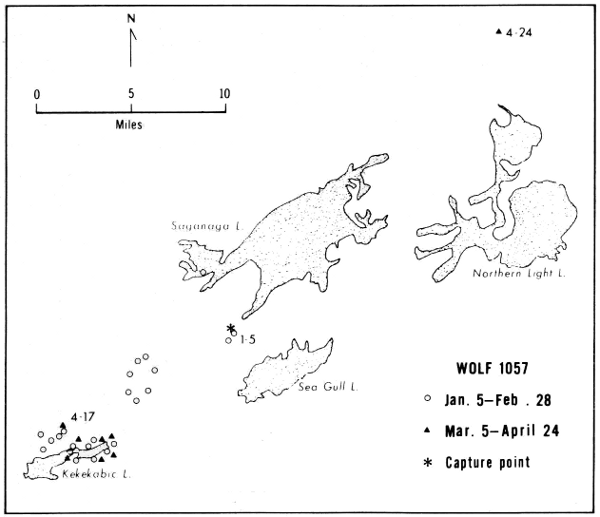
Figure 23.—Locations and range of wolf 1057.
Only selected lakes are shown.
Suddenly on April 24, 1057 was found in
Ontario some 31 miles northeast of her location
of the previous week. That was the last time we
heard her signal even though on May 2 we
scanned an area with a radius of 35 miles from
her last known location and listened for her
signal during every subsequent flight.
Wolf 1059.—This animal was a member of a
pack of three to five wolves (see next section).
The movements of the group varied little and
were concentrated in the August Lake, Omaday[Pg 18]
Lake, and Keeley Creek area in about 43 square
miles (fig. 24). Contrary to animals 1051, 1053,
and 1055, this pack did not suddenly begin a
series of longer weekly movements in late February.
Both before and after February 28, the
average weekly straight line movement of the
pack was just less than 3 miles.

Figure 24.—Location and range of wolf 1059
and pack. Only selected lakes are shown.
Probably these animals did begin traveling
more in late February, for their net daily distances
did increase at that time along with those
of the other wolves (table 4).
However, the
increased travel took place within the restricted
area of the pack's usual range rather than in
new areas as occurred with the other wolves.
Because 1059 was later found to have bred
and carried five fetuses, her movements during
whelping season (late April and early May) are
of interest. Her locations on both April 24 and
May 2 were within 250 yards of each other, which
might indicate that she was denning. On May 9,
however, she was 2.5 miles east of these locations,
on the 17th and 21st was 2 miles west of them,
and on the 30th was 3 miles north of them.
In early January 1970, Wolf 1059 was killed
by a trapper in the southeast corner of her pack's
1969 range.
Summer locations.—Signals from only 1053
and 1059 were heard during summer, and then
tracking attempts were made only on June 28,
July 29, and August 29. Locations for 1053 on
those occasions were near Kelly Landing and
Isabella Lake, within her previous range. Wolf
1059 was found each time within 2 miles outside
of the southwest corner of the pack's winter and
spring range.
Wolf Associations, Social Behavior, and Reproduction
In our study area, population units of wolves
exist as both single animals (lone wolves) and
packs. In a total of 77 observations, lone wolves
constituted 32 percent of the sightings (fig. 25),
with packs of from 2 to 13 members making up
the remainder (Table 1). On the basis of the
number of wolves seen, rather than the number
of observations, lone wolves accounted for only
25 (8 percent) out of 323.

Figure 25.—Only 8 percent of the wolves observed
were lone wolves. (Photo courtesy of L. D.
Frenzel.)
[Pg 19]
These figures compare favorably with reports
in the literature as summarized by Mech (1970).
In five areas studied, lone wolves made up from
24 to 60 percent of the observations of population
units, and from 8 to 28 percent of the wolves
seen. In our study area during 1948 to 1953, lone
wolves constituted 43 percent of the observations
and 15 percent of the wolves (Stenlund 1955).
The average size of the population units observed
during our study (total number of wolves
seen divided by the number of observations) was
4.2, which is significantly larger (95 percent
level) than the average seen in this area (2.8)
from 1948 to 1953. This is also larger than that
reported from any other area of comparable size
(table 6).
Table 6.—Mean sizes of wolf population units reported from various areas
| Area | Observations | Wolves | Mean size of population unit | Largest pack size | Authority calculated from |
|---|---|---|---|---|---|
| Number | Number | ||||
| Alaska | 310 | 1,041 | 3.4 | 12 | Kelly 1954 |
| Alaska | 1,268 | 4,823 | 3.8 | 21 | R. A. Rausch[13] |
| Lapland | 118 | 311 | 2.5 | 12 | Pulliainen 1965 |
| E. Finland | 460 | 984 | 2.1 | 12 | Pulliainen 1965 |
| Minnesota | 112 | 318 | 2.8 | 12 | Stenlund 1955 |
| Minnesota | 77 | 323 | 4.2 | 13 | Present study |
FOOTNOTES:
[13] R. A. Rausch. Personal correspondence to L. D. Mech, 1967.
The largest pack seen in our study area included
13 members, and there apparently were
at least two such packs. Although larger packs
than this have been reported, any group containing
more than 8 to 10 members is unusually
large (Mech 1970).
Wolf sociology is a complex subject and is
still not well understood, so the following detailed
observations of the associations between our
radiotagged wolves and others are given. Associations
are defined as relationships in which two
or more wolves relate in a close, positive manner.
As mentioned earlier, 1051 may or may not
have been associated with other wolves when he
was captured. However, although this animal
was observed 55 times throughout winter and
spring, only twice was he seen associating with
another wolf. Probably the same individual was
involved each time, because the location was
about the same (the vicinity of the juncture of
Aitkin, Carlton, and St. Louis Counties).
The first occasion was on April 3. Wolf 1051
in the previous week had moved 46 miles straight
line distance from the northeast. He was then
observed lying peacefully within 15 feet of another
wolf near a freshly killed deer. The very
proximity of the two animals implied a positive
relationship. On April 7, 10 and 14, 1051 was
seen 1 mile, 10 miles, and 8 miles from the kill
and was alone each time.
However, on April 17, 1051 was back in the
general vicinity of the kill, and he and another
wolf were resting on an open hillside about 100
feet from each other. As we descended for a closer
look, the smaller animal arose and headed to the
larger, presumably 1051 because he had not been
disturbed by the aircraft. The larger wolf did
not arise for several seconds, but eventually followed
the other into the woods. No tail raising
or other expressive posturing was seen in either
wolf. One week later 1051 was 26 miles northwest
of the kill traveling alone.
Wolf 1053 was never seen less than 80 yards
from another wolf, and there was no evidence
that she ever associated with a conspecific. Even
when she was seen 80 yards from the other wolf,
both were resting, and when the strange wolf
left, 1053 made no attempt to accompany or
follow it.
No. 1055 apparently had been traveling with
another wolf when caught on January 5, and
tracks showed that the individual had remained
near her until we arrived to handle her. Tracks
found on January 7 and 10 suggested that 1055
was with another animal, but that animal was
not seen during any of the six times 1055 was
observed through February 1. However, from
February 5 to 19, 1055 was with another wolf on
eight of the 12 times she was seen. The two
animals were observed resting, traveling, hunting,
and feeding together. On February 20, and thereafter,
1055 was alone all 14 times she was seen.
It is possible that 1055's associate was killed
between February 19 and 20. About March 6, a
63-pound male wolf pup was found dead (by Mr.
Charles Wick, USDA Forest Service) within
about 50 feet of a highway and less than a mile
from where 1055 and her associate were seen on
February 19. Because of the snow conditions, it
was judged that the wolf had been killed (probably
by an automobile) sometime in February.
[Pg 20]
Wolf 1057, whose foot froze during capture,
was a member of a pack of 10 to 13 wolves, and
was seen with the pack on January 13 and 18.
After that she was usually found alone, although
on at least five occasions she was with one or
more wolves:
| Period | No. of observations | Associations |
|---|---|---|
| Jan. 13 | 1 | 10 other wolves |
| Jan. 14-17 | 1 | None |
| Jan. 18 | 1 | 10 or 11 other wolves |
| Jan. 19-29 | 2 | None |
| Jan. 30 | 1 | 1 other wolf |
| Jan. 31 to Feb. 2 | 2 | None |
| Feb. 3-4 | 2 | 2 other wolves |
| Feb. 5 | 1 | 1 other wolf |
| Feb. 6-13 | 6 | None |
| Feb. 14 | 1 | 3 other wolves |
| Feb. 15-22 | 5 | None |
| Feb. 23 | 1 | 10 to 13 other wolves |
| Feb. 24 to Apr. 24 | 6 | None |
February 23 she was with the pack at a kill in
her usual area, and although the pack left that
night, 1057 remained near the kill the next day.
Presumably this animal would have traveled with
pack if she could have.

Figure 26.—One of the radiotagged wolves was a
member of this pack of five. (Photo courtesy
of L. D. Mech.)
No. 1059 was part of a pack that included
three to five members (fig. 26). From January
25, the first time she was observed after release,
through April 2, the animal was seen 19 times
with two other wolves, eight times with at least
three others, and eight times with four others.
She was never seen alone until April 17; both
times after this when she was seen, May 9 and
21, 1059 was also alone.
Some insight into the fluctuating size of this
pack was obtained on February 27 when the five
animals were followed for 2 hours. During that
time two members (one of which was larger
than the other) often lagged behind the other
three by as much as a mile. These two romped
and played considerably, with one carrying a
stick or a bone part of the time. Eventually they
caught up again to the other three. The behavior
of the two lagging wolves would be consistent
with the hypothesis that they were either pups
or a courting pair of adults. In either case, they
seemed to be an actual part of the pack even
though they temporarily traveled separately.
The fact that 1059 was observed traveling
alone three times from April 17 to May 21 may
be further evidence that the pack had a den in
the area at that time. The presence of a den
allows individual pack members to venture off
singly and return each day to a known social
center, as Murie (1944) observed, so they do
not need to travel with each other to maintain
social bonds. Wolves in our area breed during
the latter half of February (see below), and the
young should be born in the latter half of April.
Since dens are prepared a few weeks in advance
(Young 1944), pack members might be
expected to begin traveling singly in mid-April.
Some information on social relations within
our radiotagged pack of five was also obtained.[Pg 21]
One of the members could often be distinguished
from the others by its reddish cast and this
individual appeared to be the pack leader or
alpha male (Schenkel 1947). In urinating, this
animal lifted his leg, a position seen almost
exclusively in males. Except for only two temporary
occasions, this animal always headed the
pack, which usually traveled single file. The second
wolf in line generally was noticeably small,
possible a female, and the third wolf was twice
identified as 1059 on the basis of sightings of her
collar.
The leader often gained a lead on the other
wolves, especially during a chase (see below),
much as reported for a lead wolf on Isle Royale
(Mech 1966a). Upon returning to the lagging
members of the pack, this animal usually held
his tail vertically, an expression of social dominance
(Schenkel 1947). On two occasions he led
chases against strange wolves and demonstrated
the highest motivation (see below).

Figure 27.—Feces, urine, and scratching in a
conspicuous spot indicate a wolf "scent post."
(Photo courtesy of L. D. Mech.)
The leader was also the most active in his
reactions when scent posts were encountered.
Because the function of scent-marking behavior
is still unknown, it is important that detailed
descriptions of the natural behavior of free-ranging
wolves around scent posts be made
available (fig. 27). Thus the following excerpt
from field notes by Mech dated February 27,
1969, is presented:
"When they [the three wolves] came
to a small frozen pond, where the wolf
trail [which they had been following]
branched and there were some packed
down areas, they became quite excited
[fig. 28]. This was especially true of the
reddish wolf. He nosed several spots, and
scratched around them. Usually his tail
was vertical. He defecated at one spot,
and right afterwards another wolf did.
After about 2 minutes that pack went on.

Figure 28.—A pack of wolves investigating a
scent post. The raised tails indicate their excitement.
(Photo courtesy of L. D. Mech.)
"About 15 minutes later the 2 'satellite'
wolves arrived at this spot, hesitated,
nosed around but continued on after less
than a minute.
"The three wolves meanwhile came to
a junction of 2 logging roads. There they
nosed around, scratched, and acted much
as described above. Again the reddish
wolf was most active and had its tail up.
"When the last 2 wolves came to this
spot, they nosed around, ran back and
forth, and 1 defecated. They then headed
on a different branch of the trail than
the first 3 had gone on just 10 minutes
before.
"The first 3 wolves meanwhile were
running along a logging road but eventually
they circled and one other than
the reddish one headed across a swamp
toward the last 2. Then the reddish one
and the other followed this one, and
they met the last 2 on a ridge. There was
the usual tail wagging, then all headed
off together in a new direction. They
passed the first scent post again and there
was some nosing by the reddish wolf but
little hesitation.
"When they traveled, one wolf lagged
behind by 150 yards. The wolf just ahead
of it had its tail vertical part of the time,
as did the reddish leader.
[Pg 22]
"Soon the pack came upon another
area packed with wolf tracks on a pond.
There they followed every little trail, nose
to the ground, wagged tails, grouped together
often, chased each other, rolled
over, etc. for 6 minutes. The reddish animal
had tail up most of the time.
"The wolves continued on, and we
left them about 1 mile S.W. of the S.W.
arm of Bald Eagle Lake [at 6:05 p.m.]."
Unfortunately it was not known whether the
trails that the wolves were following were their
own or those made by other wolves.
Significant aspects of the above observation
are (1) the spirited initiative of the leader, (2)
the amount of time spent in scratching, urinating,
and defecating, (3) the decision of the last two
wolves to take a different route from that of the
first three even though their goal seemed to be
to catch up to the first three, and (4) the fact
that the scent posts were located at trail junctions.
In the last regard, we often noted from
the ground that wolves urinated at the junction
of newly formed human trails heading perpendicularly
from roads they were following.
Copulation in wolves was only observed once
during our study, on February 19, 1969. Two
members of a group of four were seen coupled for
2 minutes on Kekekabic Lake. On Isle Royale,
which is at the same latitude, copulations were
witnessed on February 21, 24 and 27 (Mech
1966a).
On April 17, a den west of Big Moose Lake
known to have been used at least intermittently
for 13 years was seen from the air to have fresh
activity of some kind in the snow in front of it,
and on April 24 we saw a wolf at the mound. A
few days later, two local human residents unaware
of our interests approached this den and
looked in. An adult wolf, presumably the bitch,
leaped over their heads and fled the area. The
men then dug up the den and removed six pups
whose eyes had not yet opened.
Intraspecific Intolerance and Indifference
Instances of chasing or attack by a pack of
wolves on conspecifics not a part of their group
have been described by Murie (1944) and Mech
(1966a). Observations of such behavior are important
in trying to determine conclusively
whether or not wolves are territorial. Pimlott
et al. (1969, p. 75) wrote "It still is not clear,
however, whether or not their use of range should
be defined as territorial." Mech (1970) summarized
the available evidence for territoriality in
wolves and postulated that it may be spatiotemporal
such that packs might avoid each other
at any particular point in time but over a long
period might cover the same area at different
times. A number of our observations are pertinent
to this question, for we have evidence of
both, tolerance and intolerance between population
units of wolves.
Two direct cases of intolerance were observed,
both involving the radiotagged pack and other
wolves within the usual range of the pack. Following
is a direct quote from the field notes of
Mech:
"Feb. 7, 1969—about 11:30 a.m.—aerial
and visual—1059 and 2 other wolves
traveling overland about halfway between
Heart L. and August L. (R10W-T61 N.[Pg 23]
Sect. 17 center). They were traveling
quickly and intently along a fresh wolf
trail, with a lighter reddish individual in
the lead. The other 2 animals were darker
colored, and one of them was smaller
than the other. One of them must have
been 1059.
"We soon found that about half a
mile ahead of the pack was a dark wolf
hurrying away from the three. This animal
often looked back and ran whenever
it encountered good running conditions.
It soon became obvious that the pack
of 3 was chasing this individual. Because
it [the lone wolf] often broke its own
trail, the pack gradually gained on this
animal. The single wolf flushed a deer
which ran when the wolf was about 75
feet away and floundered in the snow,
but the wolf continued hurrying on by.
"Although the deer ran only about 50
yards and stopped, the pack of 3 also
hurried on by. The single wolf flushed
another deer, ignored it, and continued
by, as did the pack of 3. The chase
continued for 2 miles as we watched, into
the N.E. corner of Sect. 18 and then into
the N. Central part of Sect. 8, and the
pack got to within 150 yards of the single
wolf.
"However, at this point, the 2 darker
members of the pack had fallen about
100 yards behind the lead one. The lead
animal stopped and waited for them, as it
had done a few times before. It then
turned around and headed back to these
animals. When they met, the reddish animal's
tail was held vertically and there
was much tail wagging by all for about
1 minute. Then all animals lay down for
a minute and then went up on a knoll.
There was much activity and 'playing'
on the knoll. (12:10 p.m.)
"The single wolf continued running
and looking back for at least another
mile. We left at 12:21 p.m.
"At 4:07 p.m. we saw a single wolf
running across a small lake and looking
behind it about 8 miles N.W. of these
animals. The creature behaved the same
as the one being chased today, and we
wondered whether it could be the same
animal."
On February 18, 1969, Ream made a similar
observation, as follows (quoted from his field
notes):
"Got visual sighting on 1059 with 3
other wolves at 11:55 about a mile west
of Omaday Lake and they were running
along fairly fast on a trail. When we
circled a second time we saw 2 wolves
curled up sleeping on a knoll ahead
(south) of the running pack. We then
realized the running wolves were on the
trail of the sleeping wolves and when
the pack of 4 with "red" in the lead was
about 50 yards from the knoll the 2
sleeping wolves jumped up and charged
away in the opposite direction full tilt,
and split and went in 2 directions. When
the pack reached the knoll they started
off on the trail of the wolf that headed
N.E. and then changed and went after
the one that headed S.W. The reddish
wolf was in the lead and really picked
up the pace. Although the reddish wolf
seemed to gain on the chased one 3 or 4
times, the pack as a whole couldn't catch
up, even though the single was breaking
trail. The reddish wolf, after gaining, always
stopped and waited for the others
or went back to find them. They chased
this wolf for 2½ to 3 miles, all the
way down to Highway 1 at a point 3.0
miles from the lab [Kawishiwi Field Station,
U.S. Forest Service]. There was a
dense patch, 10-15 acres, of woods just
before Highway 1 and we lost sight of the
chased wolf for a while and also the 4
when they entered it, but shortly we
found that the chased one had somehow
doubled back and was heading N.E.
again. The pack was apparently confused
for at one point 3 of them were
wandering back and forth on Highway 1,
apparently looking for the trail of the
chased wolf. Two of these paralleled the
Highway for a couple hundred yards and
then stopped on top of a hill, apparently
resting. During this chase both the single
wolf and the pack chased up deer from
their route of travel and didn't seem to[Pg 24]
pay much attention to them, even
though some were really floundering in
the deep snow. We finally stopped watching
all of this at 1:30 p.m. and proceeded
on our rounds."
On February 21 we also saw a single wolf
running and looking behind several times on
Ojibway Lake. Even when it saw a fisherman on
the lake within 1/8 mile, it continued across to
the opposite shore seeming most intent on avoiding
whatever was on its trail. Presumably it had
also been chased by a pack.
The cases of tolerance or indifference that
we witnessed between wolves involved our lone
animals. On January 27, 1051 was at a kill he
had made the day before, and another wolf was
sitting within 100 feet looking toward the carcass.
Eventually the unidentified wolf left without
approaching any closer. A lone wolf was also
seen near 1053 in the general vicinity of a moose
carcass, which probably both were feeding on at
different times. Three such observations were
made, on February 10, 15, and 18; and on February
21 another wolf was also seen near 1053
some 2.5 miles away from the moose carcass. In
all cases, the two animals were 80 to 200 yards
apart in open country and must have been aware
of each other's presence.
Hunting, Killing, and Feeding Behavior
The primary prey of most wolves in our study
area is the white-tailed deer (fig. 29), but some
moose (fig. 30) are also killed. We have examined
the remains of six moose that were eaten by
wolves, two of which were killed by them (fig. 31).
One was found on February 25, 1967, on
Gillis Lake and the other on March 7, 1969, on
Twinkle Lake. These locations are within 3 miles
of each other, suggesting that a wolf pack in that
area may be more accustomed to preying on
moose than other packs. The other four moose
carcasses were found in other parts of the study
area, but circumstances were such that the causes
of death of those animals could not be determined.
A discussion of the details of wolf-moose
relations in our study area must await the collection
of additional data.
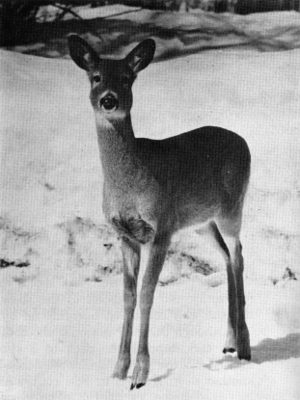
Figure 29.—The main prey of wolves in northern
Minnesota is the white-tailed deer. (Photo
courtesy of L. D. Mech.)
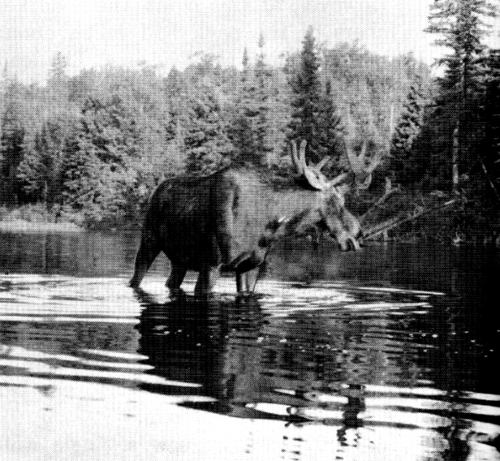
Figure 30.—Moose are also killed by wolves.
(Photo courtesy of Allan Taylor.)
[Pg 25]
The remains of 93 wolf-killed deer, and 49
probable wolf-kills, were examined for age, sex,
and condition and were compared with a sample
of 433 hunter-killed deer from the same general
area. The wolf-killed deer were generally much
older than the hunter-kills and had a significantly
higher percentage of jaw and limb abnormalities
(see Mech and Frenzel, page 35).

Figure 31.—Only a few wolf-killed moose were
located during the study. (Photo courtesy of Laurence Pringle.)
Until recently the only observations of wolves
hunting deer were those reported by Stenlund
(1955) for northern Minnesota. He described
two reports of actual observations and two reports
of interpretations of tracks in the snow, all
successful hunts. Since that time several descriptions
of successful and unsuccessful hunts have
also been published (Mech 1966b, Rutter and
Pimlott 1968, Pimlott et al. 1969, Mech 1970).
Nevertheless, many more observations must be
made before generalizations can be formed.
During the present study we were able to
witness a number of hunts from the air and piece
together others based on tracks. The following
descriptions are quoted from the field notes of
Mech:
"26 January 1967. About 3/4 mile N.E.
of Alice Lake.
"Jack Burgess [pilot] and I were following
a pack of 8 wolves, when at 4:15
they veered from their former line of
travel, about 30°. They were then about
200 yards from 2 deer. They began wagging
their tails when about 175 yards
from the deer. One deer, on the edge of a
steep bank, was lying, but one was standing
about 75 yards N. of it in open hardwoods.
The wolves continued toward the
latter deer.
"This deer remained standing in the
same place until the wolves approached
to within about 100 feet of it. The lead
wolf stopped, when that distance from
the deer, and the others caught up but
also stopped when within about 25 feet
behind the lead wolf. By this time the
deer, whose body was facing away from
the wolves, had its head turned back
over its shoulder toward the wolves. The
wolves and the deer remained absolutely
still while staring at each other, 100
feet apart, for 1-2 minutes, while we made
several circles.
"Suddenly the deer bolted, and instantly
the wolves pursued. I am fairly
certain that it was the deer that bolted
first, but could be mistaken. The action
was almost simultaneous. The deer headed
toward the other deer near the top
of the high bank. This animal had been
lying but had arisen when the wolves
were about 150 yards away.
"The lead wolf followed in the deer's
trail, but the others cut toward the bank.
This flushed the second deer (near the
edge of the bank), which ran down the
bank. Meanwhile when the first deer
reached the edge of the bank, it headed
due W. along the top of it. Only the lead
wolf pursued this animal. The other deer
had headed down the bank to the S.E.,
and at least a few of the wolves followed
it.
"We could not watch both deer, so we
continued following the first. The deer
had no trouble in snowdrifts, but the wolf
was hindered by them. The wolf followed
the deer for about 200 yards along the
top of the bank, and then gave up after
losing ground. The wolf had run a total
distance of about 250-275 yards. He
then lay down and rested.
"We noticed at least 3 wolves stopped
part way down the bank in the trail of
the second deer. However, we did not[Pg 26]
see the remaining wolves or the second
deer.
"Eventually (after about 5 minutes),
these wolves joined the first, and all rested.
At 4:25 p.m., one wolf started toward
a third deer, which had been lying under
a tree while the former chase took place.
The deer was about 150 yards from where
the wolves rested, and it had stood before
the wolf started toward it. We could not
see whether the deer or wolf bolted first,
but suddenly both animals were bounding
away. The wolf chased the deer about
125 yards and gave up after losing
ground. The other wolves followed slowly
in its trail, and all assembled and rested.
The deer continued running for at least
1/4-mile."
"27 February 1969. 2 miles N. of August
Lake.
"1059's pack of 5 was heading N.E.
at 4:10 p.m. when they got to within 100
yards of 2 standing deer. The deer had
been standing alertly in a shallow draw,
and when at least 2 wolves got to within
100 yards, they fled. The wolves began
running after them.
"The deer were in snow up to their
bellies and had to hesitate slightly at
each bound. But they ran fast. We could
only see one wolf very much [of the time].
It was also having a difficult time in the
snow, and after a total run of about 250
yards (100 to the deer's original location
and 150 after the deer), the wolf
lay on the snow and rested about 10
minutes. The deer ran only about 200
yards more and stood alertly for the next
20 minutes at least. The wolves then
went on.
"27 March 1969. About 2 miles S.E.
of Central Lakes, Minnesota.
"At 3:00 p.m. while we were following
wolf 1051 by aircraft in above location,
we saw a deer running very quickly on
top of the crusted snow and then stand
and watch its backtrail. About 1½ minutes
later we saw 1051 running along
the same route. We did not see when
the deer fled again, but saw it running
about 100 yards from the wolf and doubling
back paralleling its original route.
When the wolf got near the approximate
doubling-back point, he lay down and
rested for about 5 minutes. The deer
continued fleeing for about 350 yards,
stopped, and for several minutes faced
its backtrail. The wolf finally continued
on in his original direction, giving up the
chase.
"At 4:30 p.m.—1½ miles S. of Central
Lakes, Minnesota—Wolf 1051 had come
to within 100 yards of [four-lane] Highway
53 and was hesitant to approach it.
Several cars were going by in both directions.
Thus the wolf headed S. parallel
with the highway about 150 yards E. of
it.
"Suddenly two deer, which we had
noticed S. of the wolf earlier, fled across
the highway. The wolf soon got to the
point where they crossed, hesitated about
a minute and then ran across. No cars
came at that time.
"We could not always see the deer or
the wolf when W. of the road because
there were several patches of evergreens.
The wolf did head straight W. after
crossing the road. Then about 250 yards
W. of this point we saw a deer come out
onto an old woods road which lay in a
N.W.-S.E. axis. The deer ran N.W. on
the road and then we saw the wolf where
the deer had come out onto the road.
While the deer ran N.W., the wolf cut
into the woods to his right, N.E. We
could not see it then but presumed it
was running N.W. paralleling the road.
"After the deer had run about 50
yards up the road, it also headed N.E.
into the evergreens. Within a few seconds
it fled right back out and started
S.E. down the road. The wolf was about
50 feet behind it and began gaining.
"When the deer got back to where the
wolf had headed into the woods from
the road before, it also headed N.E. into
the woods. The wolf was then about 20
feet away and the deer was headed N.
around in a circle with the wolf closing
in on the outside. The wolf did not emerge
from the evergreens for at least 15 minutes,[Pg 27]
nor did we see the deer, so I presume
the wolf killed the deer. [But see
entry for April 1.]
"1 April 1969. Dan Frenzel and I
searched the area described on March 27
for 1 hour and found no sign of a kill.
Old wolf tracks were seen, but only a
single wandering track. No concentration
such as usually seen at kills. Best
conclusion is that 1051 did not kill the
deer where seen from the air March 27."
We also saw 1055 and her associate actually
kill a deer, on February 6, 1969, but we did not
realize what was going on and it happened so
fast that we only saw a wolf rushing and biting
at the front end of the downed animal. The
chase had to have lasted only a few seconds.
In addition to the above direct observations,
we also were able to piece together from tracks
in the snow the chase and successful encounter
between a single wolf and a deer in two instances.
In the first case, on January 25, 1967 (11:50
a.m.), we arrived at the scene (near Grub Lake,
just N. of Snowbank Lake) within an hour of
the encounter, and the wolf was still feeding on
the deer, which had been a 2½-year-old female.
Mech examined the area from the ground and
made the following observations:
"The deer had come S.W. down the
middle of the lake at a fast walk, turned
around, backtracked a few yards and
headed to the N.W. shore of the lake.
Meanwhile a wolf had come at a trot
along the deer's track, but it had cut to
the N.W. shore about 50 yards N.E. of
where the deer had. When still on the
ice about 15 feet from shore, the wolf
began running as evidenced by his long
bounds. He continued running inland
about 50 feet from shore toward the deer.
The deer had walked inland from the
shore and may have stood there about 25
feet from shore. Suddenly it had bounded
away. The bounding wolf track was in
the same trail as the deer's for about 25
yards but then it paralleled the deer's
about 5 feet away on the inland side.
After about 125 yards from where the
deer flushed, the deer was pulled down.
It was not on its side but rather had
sunk into the snow in more-or-less of
an upright position.
"Apparently the deer had just about
reached the shore when the wolf noticed
it, and it detected the wolf. At this time
the wolf must have been up the shore
about 50 yards where his tracks first
showed he began bounding. There was
no sign that the wolf had spotted the
deer on the lake and had tried to cut
it off from shore by running inland along
the shore and then waiting for the deer
to come inland. Once the wolf had begun
bounding, he continued until he pulled
the deer down.... Sign showed that the
deer dropped within about 20 feet of
where she had begun bleeding."
The second case involved a 5½-year-old buck,
No. M-28, which had arthritis of his right hind
foot and probably had defective gait (see Mech
and Frenzel p. 35). The attack took place on
Basswood Lake on February 2, 1967, and excerpts
from field notes by Mech follow:
"A single wolf had killed this deer after
chasing, following, or tracking the deer
about 3.75 miles. The deer's last 350
yards was a fast walk—the tracks were
one in front of the other and about 2 feet
apart, and there was no leaping or bounding.
Same with the wolf—a fast trot.
"Where the tracks came together, the
deer apparently had fallen, but there was
no blood. From there, the deer dragged
its feet or the wolf for about 25 feet and
then went down again. The wolf circled
the deer, and for the next 150 feet, the
2 animals had fought or scuffled and then
the deer had gone down where we found
it.
"The 4-mile persistence of this wolf—whether
tracking, following, or chasing
the deer—is remarkable [compared with
most chases] and makes me believe the
wolf had good reason to believe it could
kill the deer."
Our observations of wounds on fresh kills
confirm the following description by Stenlund
(1955, p. 31) of the location and manner of attack
of wolves on deer: "No evidence of hamstringing
of deer was found on freshly killed
carcasses, although the possibility does exist.
Usually deer are run down from behind, the[Pg 28]
wolf or wolves biting at the hind flanks and
abdomen, or at the hind flanks and head region
simultaneously."
On each kill, all the flesh and much of the
skin and bones were eaten, at least during the
winters of 1966-67 and 1967-68. This was also
true during December 1968 and much of January
1969. However, during February and March
1969 when an unusual accumulation of snow had
built up, most of the kills were only partly eaten
(see Mech et al., page 51). In previous years
deer freshly killed by single wolves were sometimes
found with only a few pounds of flesh
or viscera missing. However, in each case the
carcasses were almost completely cleaned up
within a few days, often by packs to which the
single wolves may have belonged (Mech 1970).
Usually the first parts of a carcass to be eaten
are the hams and part of the viscera from the
coelomic cavity. In one case where a wolf was
interrupted while feeding it was apparent that
the animal had been stripping the omental fat
from the carcass. This may be the wolf's favorite
part of a deer, for the stomach of one wolf that
we examined in January 1967 contained nothing
but such fat.
The average consumption and kill rate of
deer by wolves has not yet been determined, but
we have some information bearing on the subject.
Because our data were obtained during a winter
of unusually deep snow, and it was obvious that
wolves were killing more deer than they could
eat at the moment (see Mech et al., page 51),
our figures should be considered much higher
than average. However, they should be useful
in that they probably represent the maximum
kill rate not only throughout the year but also
throughout a period of many years.
By observing each of our radiotagged wolves
whenever possible and noting whether or not it
was feeding on a kill, we learned that our wolves
generally remained close to their kills for periods
of from 1 to 7 days, depending on how recently
they had eaten (fig. 32). Thus, when a wolf was
found at a new location each day, the assumption
could be made that the animal did not currently
have a kill.

Figure 32.—Periods spent by radiotagged wolves and their associates feeding
on kills judged to be their own. This does not include periods when they
were known to be feeding on carrion.
(Click for larger image.)

Figure 33.—Radiotagged wolf (upper left) found
at kill (lower right). (Photo courtesy of L. D. Frenzel.)
We assumed that wolves found at fresh kills
(fig. 33) had made them unless there was evidence
to the contrary as with 1053, the scavenger.
When a wolf was found at one location for several
consecutive days but could not be observed, we
assumed it was feeding on a kill, since whenever
wolves were observed remaining in the same
location for several days they were seen feeding.
Thus a range of possible number of kills per
wolf was determined, with the lower limit being
the known minimum and the upper limit the
possible maximum. When more than one wolf
fed on a kill, as with the pack, the figures were
calculated on a per-wolf basis.
[Pg 29]
In this way we obtained data on a total of
468 wolf-days and found a total kill of 35 to 48
deer (table 7). This averages out to a kill rate
of one deer per 10 to 14 days per wolf. The
figure varied considerably among individuals—1051
had the highest rate of one kill per 6.3 to
7.2 days, and each wolf in 1059's pack had the
lowest rate (except for 1053, the scavenger) of
one deer per 14.0 to 18.0 days.
It is significant that the pack of five wolves
had a lower kill rate per wolf than did single
wolves and pairs. This is explainable because the
ability of wolves to kill deer during early 1969
was much greater than usual (see Mech et al.,
p. 51). Thus single wolves probably could kill
deer just as easily as could packs, but they did
not need to share them. This differs markedly
from the situation on Isle Royale, where lone
wolves usually feed only on moose remains left
by packs (Mech 1966a, Jordan et al. 1967).
That lone wolves had more of a food surplus
than those in the pack is confirmed by the figures
on the average number of days that the various
wolves fed on kills (table 7). Wolf 1051 spent
an average of only 2.2 to 2.4 days feeding at
each of his kills, whereas 1059's pack of five spent
an average of 5.8 to 7.5 wolf-days at each kill.
Further confirmation is found in the fact that
even when most wolves were leaving their kills
partly uneaten, a pack of 8 to 10 wolves (probably
that to which 1057 belonged) was seen
completely devouring a kill.
Table 7.—Kill rate of deer by radiotagged wolves and their associates
| Wolf number | Wolves | Dates | Wolf-days of data | Kills | Wolf-days per kill[14] | Wolf-days feeding | Wolf-days feeding per kill |
|---|---|---|---|---|---|---|---|
| Number | Number | Number | Mean Number | Number | Mean Number | ||
| 1051 | 1 | Nov. 26 to Apr. 3 | 101 | 14-16 | 6.3-7.2 | 33-40 | 2.2-2.4 |
| 1053[15] | 1 | Dec. 14 to Mar. 27 | 75 | 2-3 | 25.0-37.5 | 9-18 | 4.5-6.0 |
| 1055 | 1-2 | Jan. 9 to Mar. 14 | 61 | 4-9 | 6.7-15.0 | 13-25 | 2.8-3.3 |
| 1057 | 1-13 | Jan. 24 to Feb. 28 | 51 | 5-7 | 7.3-10.2 | 25-33 | 4.7-5.0 |
| 1059 | 5 | Jan. 25 to Mar. 14 | 180 | 10-13 | 14.0-18.0 | 75 | 5.8-7.5 |
| Summary | 22 | Nov. 27 to Apr. 3 | 468 | 35-48 | [16]9.8-13.4 | 145-181 | [17]3.8-4.1 |
| Before Feb. 1 | 142 | 7-9 | [18]15.7-20.3 | 39-56 | 5.1-5.6 | ||
| After Jan. 31 | 326 | 28-39 | 8.4-11.6 | 106-125 | 3.2-3.8 | ||
FOOTNOTES:
[14] Kill rate per wolf.
[15] Figures for this animal are so low because she was basically a
scavenger.
[16] Average kill rate per wolf for all radiotagged wolves and their
associates, derived by dividing total number of wolf-days by total
number of kills.
[17] Average number of days that each wolf spent at each kill, derived
by dividing total number of wolf-days spent feeding by the total number
of kills.
[18] This figure probably is the closest to the actual kill rate during
most winters.
[Pg 30]
Therefore it is probable that the kill rate per
wolf for members of the pack of five is much
closer to the usual average winter kill rate. It
can still be considered higher than the usual
winter rate, however, because this pack also was
leaving some of its kills partly uneaten.
A reasonable approximation of the average
kill rate during most winters would be the rate
found for our radiotagged wolves before February
1, because the relations among the wolves, the
deer, and the snow during that period were not
unlike those of most winters. The average kill
rate per wolf before February 1 was estimated
at one deer per 15.7 to 20.3 days.
After this period, the rate increased to about
one deer per 8.4 to 11.6 days, and an estimated
50 percent of the available food was left uneaten
(see Mech et al., page 51). This implies
that the kill rate during February and March
was about twice as high as usual. On this basis,
the usual kill rate would be estimated at one
deer per 16.8 to 23.2 days, which checks well
with the rate found before February (one deer
per 15.7 to 20.3 days). Thus we feel that an
estimated kill rate of about one deer per 18 days
per wolf is a close approximation of the average
kill rate for most winters. This is about 50 percent
less than the kill rate of one deer per 4 days
estimated by Stenlund (1955) for two packs of
three wolves (one deer per 12 days per wolf).
However, it compares favorably with the actual
kill rate of one deer per wolf per 17.6 days found
for a pack of eight wolves in Ontario.[19]
Once the average rate of kill is known, the average
food consumption per wolf can be calculated.
The average deer (considering both fawns and
adults) from the Superior National Forest during
winter weighs about 113 pounds (calculated from
Erickson et al. 1961), and an arbitrary 13 pounds
can be deducted from this for inedible portions.
This leaves 100 pounds of deer per wolf per
18 days, or 5.6 pounds per wolf per day. This
figure is much less than the 10 to 14 pounds
estimated consumption rate for wolves feeding
on moose on Isle Royale (Mech 1966a). However,
much variation can be expected in an
animal whose physiology must be adapted to a
feast-or-famine existence.
Wolves can be maintained in captivity on
2.5 pounds of meat per day, and large active
dogs (Canis familiaris) require 3.7 pounds per
day, so it is likely that the minimum daily requirement
for wolves in the wild is about 4.0
pounds per day (Mech 1970). This figure agrees
well with the estimated consumption rate for
our study area.
FOOTNOTES:
[19] Kolenosky, G. B. Wolf movements, activities and predation impact
on a wintering deer population in East-Central Ontario. (Manuscript in
preparation for publication.)
Relative Population Density
Censusing wolves in a 1.5-million-acre study
area is a difficult task, and we have no direct
information on which to base a population estimate.
However, some deductions can be made
about the relative population densities in our
study area between the period 1948 to 1953 and
the period of the present study, 1967 to 1969.
R. A. Rausch (1967a) hypothesized that the
frequency of large packs is higher when population
density is high, and presented evidence supporting
this idea. On this assumption, a comparison
of pack-size distributions between various
periods can indicate relative population densities
between periods. The advantage of this method is
that it eliminates the usual type of year-to-year
biases in wolf censuses such as might result from
differences in precise census route, type of aircraft,
skill of observers, and other conditions.
Only a difference that would cause a bias in the
size of the packs seen would be of importance.
Therefore, we tested the difference in size
distributions of population units between the
1948-53 study period and the present period
(table 1), using a Kolmogorov-Smirnov two-sample
test (Siegel 1956). The average "pack"
size in the earlier years was 2.8, compared with
4.2 at present; thus pack sizes are significantly
larger at present (95 percent level). This indicates
that the population density from 1967 to
1969 may have been higher than from 1948 to
1953. This apparent change may be attributable
to a reduction in snaring, trapping, and aerial
hunting that took place between the two periods
as a result of changes in State game regulations.
A similar comparison between our observations
from 1967 and those from 1968-69 (table 1)
shows no significant difference between these[Pg 31]
years, so it appears that the density of wolves in
our area has remained about the same over the
period of three winters. This agrees with the
results of several other studies summarized by
Mech (1970) in which wolf populations unaffected
by man have been found to remain relatively
stable from year to year.
DISCUSSION AND CONCLUSIONS
The movements, behavior, and ecology of the
wolves in our study area during winter are
variable, and are influenced considerably by snow
conditions. This may explain the fact that in
late February 1969 wolves 1051, 1053, and 1055
suddenly extended their travels and range (fig. F-34 and table 4).
However, increased travel may have resulted
from other factors. For one thing, the wolves
apparently did not need to spend so much time
hunting as before. Because of the deep snow,
the ability of wolves to capture deer increased,
and the animals had a surplus of food. Perhaps
under such conditions wolves may use more of
their energy for traveling than for hunting.

Figure 34.—Net weekly (straight-line) distances
traveled by three radiotagged wolves.
In this respect it is interesting that 1051
moved right out of his area and traveled into
country that presumably was unknown to him.
Wolves 1053 and 1055 each ventured into an
area that was almost devoid of deer and that
even had few moose in it. Without sufficient fat
reserves in all these animals, it would seem
disadvantageous for them to have made these
travels.
Evidently wolves can obtain enough food in
much smaller areas than these three animals
used after February. Both 1059's pack of five
and 1057 lived in relatively small areas throughout
the winter and seemed to survive well.
Before late February, 1051, 1053, and 1055 did
also. Thus some factor other than food must have
influenced the movements of these three animals
from late February through April.
The fact that the increased movement began
during the breeding season makes one suspect
a relationship between the two. One possibility
is that the factors increasing the hormonal flow
associated with breeding in adults stimulate a
hormone output in immature or subordinate
individuals that causes an increase in their
movements. An alternative is that the breeding
behavior of resident packs involves the beginning
of, or an increase in, aggression toward neighboring
nonmembers. This might force the lone
animals to shift about over large areas in avoidance
of such aggression.
Whatever the cause of the changes in movements
of these animals, the fact that the pack
used a much smaller area than any of the lone
wolves may be of central importance in trying
to understand the organization of the wolf population.
The following pieces of information are
also pertinent to such an understanding: (1) the
pack, which can be presumed to include a breeding
pair (Mech 1970), chased other wolves in
its area; (2) the lone wolves, which apparently
did not breed, were tolerant of, or indifferent to,
other lone wolves in their areas; (3) the ranges
of the lone wolves overlapped considerably (fig. 35);
(4) the lone wolves seemed to avoid certain
large areas that one might logically think would
have been visited by them (fig. 35); and (5)
packs of wolves were sometimes observed in
these large areas (fig. 35).
[Pg 32]

Figure 35.—Locations of all radiotagged wolves and unmarked packs observed
during winter 1968-69, except dispersal of 1051 out of the study area.
Only selected lakes shown.
(Click for larger image.)
From the above information it can be hypothesized
that the wolf population consists basically
of groups of breeding packs defending territories
of limited size, with lone wolves and other nonbreeding
population units that are tolerant of
each other shifting about in much larger nonexclusive
areas among these territories. The information
from Isle Royale (Mech 1966a, Jordan[Pg 33]
et al. 1967) is consistent with this idea, but the
area of that island (210 square miles) is too
small to allow untested extrapolations to be
made about spacing in much larger wolf populations.
Data from Algonquin Park, Ontario
(Pimlott et al. 1969) also strongly suggest this
hypothesis. However, the packs studied there
could not be identified with certainty, and little
information was obtained about nonbreeding
population units.
To test the proposed hypothesis with certainty,
a larger number of identifiable breeding and
nonbreeding population units from the same
general area must be followed during at least
one winter. This will be the main objective of
our next study.
SUMMARY
During the winters of 1966-67, 1967-68, and
1968-69, aerial observations of timber wolves
(Canis lupus) were made in the Superior National
Forest in northeastern Minnesota, where
the primary prey is white-tailed deer (Odocoileus
virginianus). In 480 hours of flying during the
study, 77 sightings involving 323 wolves were
made. In addition, during 1968-69, five radiotagged
wolves and their associates were tracked
via receivers in aircraft for a total of 570 "wolf-days."
Visual observations were made during
65 percent of the times the wolves were located
from December through April.
The average size of each population unit
(including single wolves, pairs, and packs) observed
was 4.2, although packs of as many as
13 wolves were sighted. Radiotagged wolves
spent most of their daylight hours resting during
winter, and when traveling, hunting or feeding
during the day, tended to do so before 11:00 a.m.
and after 3:00 p.m.
Considerable variation was discovered in the
movement patterns of individual wolves, with
straight line distances between consecutive daily
locations ranging from 0.0 to 12.8 miles, and
between weekly locations, 0.0 to 49.0 miles. A
pack of five wolves used a range about 43 square
miles in extent, whereas lone wolves covered
areas many times this size. One animal in an
apparent dispersal was tracked a straight line
distance of 129 miles between extreme points.
A reddish male wolf was the leader of the
pack of five and led two observed chases after
alien wolves in the pack's territory. This animal
was also most active during scent marking by
the pack. Lone wolves were apparently indifferent
to other wolves, and thus exclusive areas,
or territories, were not observed among lone
wolves.
Hunts involving a total of seven deer were
observed and described, and two successful
attacks on deer were interpreted from tracks in
the snow. Wolves generally consumed all the
flesh and much of the hair and bones from kills,
except during February and March 1969 when
extreme snow conditions increased the vulnerability
of deer to an unusual degree. At that time
kills were found that were partly or totally uneaten.
The kill rate by radiotagged wolves and
associates during the winter of 1968-69, based
on 468 wolf-days of data, varied from one deer
per 6.3 days to one per 37.5 days per wolf, with
the average being one deer per 10 to 13 days.
The rate was much lower per wolf for members
of the pack of five than for lone wolves, and
much lower before February 1, 1969, than after.
The average rate of kill during more usual
winters was estimated to be about one deer
per 18 days. This is a consumption rate of
about 5.6 pounds of deer per wolf per day.
Indirect evidence based on comparisons of
pack-size distributions for different periods indicates
that the wolf density in the study area
may have increased since 1953, but that it has
remained the same from 1967 to 1969.
On the basis of data presented in this paper,
the following hypothesis about the organization
of the wolf population studied is proposed: The
wolf population consists basically of groups of
breeding packs defending territories of limited
size, with lone wolves and other nonbreeding
population units, tolerant of each other, shifting
about in much larger nonexclusive areas among
these territories.
ACKNOWLEDGMENTS
This study was supported by Macalester
College, the U.S. Bureau of Sport Fisheries and
Wildlife, the USDA Forest Service, the Minnesota
Department of Conservation, and the New
York Zoological Society. Special thanks are due
the following for their help and cooperation with[Pg 34]
this project: Mr. J. O. Wernham, former Supervisor,
Mr. L. T. Magnus, Wildlife Biologist,
numerous District Rangers, and other supporting
personnel of the Superior National Forest,
Mr. J. T. Morgan, North Central Forest Experiment
Station; and Mr. S. E. Jorgensen and Mr.
C. E. Faulkner, U.S. Bureau of Sport Fisheries
and Wildlife.
Drs. C. T. Cushwa, L. F. Ohmann, Catherine
Ream, and D. G. Schneider aided in the field
work. Mr. W. W. Cochran provided advice and
suggestions on the radiotracking technique, Dr.
U. S. Seal furnished the drugs and the advice on
their use with wolves, and Mr. R. Himes contributed
significantly in the wolf trapping. Mr. L.
Ringham, Ontario Department of Lands and
Forests, granted permission for research personnel
to radiotrack wolves crossing into Quetico
Park, Canada. Numerous students from Macalester
College also contributed to the field effort.
Thanks are also due pilots Robert Hodge,
Pat Magie, Ken Bellos, Don Murray, Jack Burgess,
and several others, who along with pilot-biologist
John Winship, expertly flew the aircraft
used in the study.
This report was reviewed by the following
biologists: Mr. G. B. Kolenosky, Dr. P. A. Jordan,
Mr. M. H. Stenlund, and Dr. D. L. Allen.
Mr. Wallace C. Dayton, Miss Elizabeth Dayton,
and the Quetico-Superior Foundation, all
of Minneapolis, generously contributed funds to
support Mech during the preparation of the
paper.
LITERATURE CITED
Burkholder, B. L. 1959. Movements and behavior
of a wolf pack in Alaska. J. Wildl. Manage.
23: 1-11.
Erickson, A. B., Gunvalson, V. E., Stenlund, M.
H., Burcalow, D. W., and Blankenship, L. H.
1961. The white-tailed deer of Minnesota.
Minn. Dep. Conserv. Tech. Bull. 5, 64 p.
Fuller, W. A., and Novakowski, N. S. 1955. Wolf
control operations, Wood Buffalo National
Park, 1951-1952. Can. Wildl. Serv., Wildl.
Manage. Bull. Ser. 1, No. 11, 23 p.
Goldman, E. A. 1944. The wolves of North
America, Part II. Classification of wolves, p.
389-636. Washington, D. C.: The Amer. Wildl.
Inst.
Jordan, P. A., Shelton, P. C., and Allen, D. L.
1967. Numbers, turnover, and social structure
of the Isle Royale wolf population. Amer. Zool.
7: 233-252.
Kelly, M. W. 1954. Observations afield on Alaskan
wolves. Alaska Sci. Conf. Proc. 5: 35 (and
mimeo).
Kolenosky, G. B., and Johnston, D. H. 1967.
Radio-tracking timber wolves in Ontario.
Amer. Zool. 7: 289-303.
Mech, L. D. 1966a. The wolves of Isle Royale.
U. S. Nat. Park Serv. Fauna Ser. 7. 210 p.
Mech, L. D. 1966b. Hunting behavior of timber
wolves in Minnesota. J. Mammal. 47: 347-348.
Mech, L. D. 1970. The wolf: the ecology and
behavior of an endangered species. 389 p.
New York: Natural History Press, Doubleday.
Mech, L. D., Kuechle, V. B., Warner, D. W., and
Tester, J. R. 1965. A collar for attaching radio
transmitters to rabbits, hares, and raccoons. J.
Wildl. Manage. 29: 898-902.
Mohr, C. O. 1947. Table of equivalent populations
of North American small mammals.
Amer. Midl. Nat. 37: 223-249.
Murie, A. 1944. The wolves of Mount McKinley,
U. S. Nat. Park Serv. Fauna Ser. 5, 238 p.
Nellis, C. H. 1968. Some methods for capturing
coyotes alive. J. Wildl. Manage. 32: 402-405.
Ohmann, L. F., and Ream, R. R. 1969 Vegetation
studies in the BWCA—a brief report
on plant communities. Naturalist 20(1):
20-29.
Olson, Sigurd F. 1938a. Organization and range
of the pack. Ecology 19: 168-170.
Olson, Sigurd F. 1938b. A study in predatory
relationship with particular reference to the
wolf. Sci. Mon. 46: 323-336.
Pimlott, D. H., Shannon, J. A., and Kolenosky,
G. B. 1969. The ecology of the timber wolf
in Algonquin Provincial Park. Ont. Dep. Lands
and Forests Res. Rep. (Wildlife) 87, 94 p.
Pulliainen, E. 1965. Studies of the wolf (Canis
lupus L.) in Finland. Ann. Zool. Fenn. 2: 215-259.
Rausch, R. A. 1967. Some aspects of the population
ecology of wolves, Alaska. Amer. Zool.
7: 253-265.
Rutter, R. J., and Pimlott, D. H. 1968. The
world of the wolf. 202 p. Philadelphia and
N. Y.: J. B. Lippincott Co.
Schenkel, R. 1947. Expression studies of wolves.
Behaviour 1: 81-129. (Translation from German
by Agnes Klasson.)
Seal, U. S., and Erickson, A. W. 1969. Phencyclidine
hydrochloride immobilization of the
Carnivora and other mammals. Fed. (Symp.
Lab. Anim. Anesthes.) Proc. 28: 1410-1419.
Siegel, S. 1956. Non-parametric statistics for the
behavioral sciences. 312 p. New York: McGraw-Hill.
Stenlund, M. H. 1955. A field study of the
timber wolf (Canis lupus) on the Superior
National Forest, Minnesota. Minn. Dep.
Conserv. Tech. Bull. 4, 55 p.
Young, S. P. 1944. The wolves of North America,
Part I. 385 p. Washington, D. C.: The
Amer. Wildl. Inst.
[Pg 35]
AN ANALYSIS OF THE AGE, SEX, AND CONDITION
OF DEER KILLED BY WOLVES IN NORTHEASTERN MINNESOTA
L. David Mech and L. D. Frenzel, Jr.
The selective effect of predation on prey populations
is of significance in studies of evolution
and population dynamics. Selective predation
can be an important agent in the process of
natural selection, and it influences the extent
to which predators limit the numbers of their
prey.
One of the predators most commonly chosen
for investigating the selective effect upon prey is
the wolf (Canis lupus). Because animals preyed
upon by wolves generally are large, their remains
can be more easily located and examined. It
already has been established that in most areas
wolves kill primarily young, old, and other inferior
members of such prey populations as Dall
sheep (Ovis dalli), moose (Alces alces), caribou
(Rangifer tarandus), bison (Bison bison), and
musk-oxen (Ovibos moschatus); evidence for this
generalization has been summarized by Mech
(1970).
However, only recently has it been shown
that this generalization may extend to predation
on the smallest hoofed prey of the wolf in North
America, the white-tailed deer (Odocoileus virginianus).
Pimlott et al. (1969) demonstrated a
difference between the age structure of 331 deer
killed by wolves during winter in Algonquin Park,
Ontario, and 275 deer assumed to represent the
actual population in the same area. Whereas only
13 percent of the deer from the population at
large were estimated to be more than 5 years
old, 58 percent of the wolf-kills were in this age
category.
We employed a similar analysis for deer
killed by wolves in northeastern Minnesota, but
used a more refined aging technique and included
comparisons of the age and sex structures of
various subsamples of wolf-kills. Whereas the
Ontario research involved a prey population unlimited
by man, our work was carried out on
both a hunted population and on one relatively
unhunted. Further comparisons were made between
deer killed during periods of normal snow
conditions and those taken during unusually high
snow accumulations. The incidence of various
abnormalities in wolf-killed deer was also compared[Pg 36]
with that in hunter-killed animals.
The study was carried out in the Superior
National Forest in northern St. Louis, Lake, and
Cook Counties of northeastern Minnesota (fig. 1),
in conjunction with other aspects of wolf
research (see Mech et al. p. 1).

Figure 1.—The study area showing locations where wolf-killed and hunter-killed
deer were taken. Line arbitrarily separates the hunted area from
the wilderness area.
(Click for larger image.)
METHODS
The investigation began in February 1966
and continued through March 1969; the basic
objective was to examine as many wolf-killed
deer as possible and compare their ages, sex,
and condition with a large sample of deer from
the population at large in the same area. Wolf-kills
were examined only during December
through March when they could be found from
the air. Aircraft ranging in size from an Aeronca
Champ to a Cessna 206 were used to fly over
frozen lakes at altitudes up to 2,000 feet to locate
wolves (fig. 2), wolf tracks, or kills (fig. 3). We
often discovered kills by tracking a wolf pack.
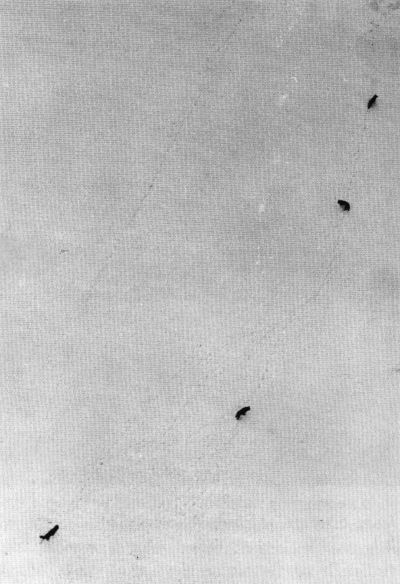
Figure 2.—Wolves were located from the air, usually
on frozen lakes. (Photo courtesy of L. D.
Mech.)

Figure 3.—Wolf-kills were easily spotted from aircraft. (Photo courtesy of
L. D. Mech.)
During the winter of 1968-69 this method
of finding kills was supplemented by radiotracking
five wolves and their associates via aircraft
(see Mech et al., p. 1). The latter technique
resulted in increased discovery of inland
kills.
A deer carcass was judged killed by wolves
if the death had been recent, if tracks or other
sign indicated that wolves had fed upon it, and
if no other possible cause of death was discovered.
Carcasses fed on by wolves but not clearly
identifiable as kills were labeled "probable" wolf-kills.
Although the cause of death of the specimens
in this latter category could not be determined
with certainty, there was no reason to
believe other agents were involved.
[Pg 37]
In addition to the wolf-kills examined by
project personnel, data and lower jaws from deer
judged killed by wolves were contributed by
other biologists, game wardens, forest rangers,
and others whose competence was known. Nevertheless,
if certain identification of carcasses as
wolf-kills was not possible, the data were relegated
to the "probable" wolf-kill category.
Whenever possible, kills discovered from the
air were examined on the ground (fig. 4). Often
only skeletal parts remained, but soft parts were
also examined when available. Femur marrow,
heart, lungs, liver, kidneys, reproductive tracts,
and omenta were usually inspected in the field
for fat, parasites, and abnormalities, and the
degree of subcutaneous back fat was also noted.
Hoofs and lower legs were checked, and those
showing pathological conditions or abnormalities
were collected and examined by the Veterinary
Diagnostic Laboratory of the University of Minnesota.
All lower jaws found were collected, aged,
and examined for dental abnormalities and pathological
conditions.

Figure 4.—As many wolf-killed deer as possible
were examined from the ground. (Photo courtesy
of L. D. Mech.)
In November 1967 and 1968 hunter-check
stations were operated on the study area (fig. 5),
and deer bagged by hunters were field-checked
for age (Severinghaus 1949) and hoof abnormalities.
As many lower jaws as possible were
collected from field-checked deer and other deer
killed in the area for age determination and
examination for abnormal dentition.

Figure 5.—Information about hunter-killed deer
in the study area was obtained through hunter-check
stations. (Photo courtesy of L. D. Frenzel.)
An assumption was made that the age structure
and incidence of abnormalities in the sample
of hunter-killed deer would be reasonably representative
of those in the population at large, an
assumption also implicit in a similar comparison
made by Pimlott et al. (1969). In this respect,
the following statements by Maguire and Severinghaus
(1954, p. 109) about deer in New York
State are pertinent: "It may be concluded that,
considering the open season as a whole, wariness
does not significantly distort the age composition
of the [deer] kill in relation to that of the
corresponding wild population, except possibly
for buck seasons of only 1 or 2 days duration....
A reliable appraisal of the age composition of
the kill by hunting may be obtained through
the operation of roadside checking stations."
However, in critically reviewing the present
paper Severinghaus stated that in States such
as Minnesota, with fewer hunters and higher
hunter success rates, age compositions of deer
from checking stations may not be the same
as those of wild populations. Reviewers Peek and
Downing also made similar comments.
Nevertheless, for our comparison with wolf-killed
deer it is not necessary that the hunter-kill
age structure be exactly representative of the
age structure of the actual deer population. All
that is required is that there be reasonable
agreement between the two. The hunting regulations
in our study area allow a 9-day period
of taking deer of any age or sex, and a single
hunter may legally shoot as many deer as he
and his party or associates have permits for.
Thus there is no reason for selective hunting, and
we feel confident that the age structure of the
hunter-kill in our study area does basically
represent that of the deer herd at large.
[Pg 38]
Two laboratory techniques were used for determining
the ages of deer from the lower jaws
or mandibles—a tooth replacement and wear
technique (Severinghaus 1949) and an incisor-sectioning
method (Gilbert 1966). The tooth-wear
technique requires only the molariform
teeth but it is more subjective and inaccurate,
particularly in older deer (Ryel et al. 1961). Incisor
sectioning requires only incisors and appears
to be much more accurate.
However, because the incisors had been lost
from many of the wolf-kills, and because the
tooth-wear technique was used at checking stations,
both methods were applied in the laboratory.
Mr. David W. Kuehn (1970) sectioned
and aged the incisors. Fortunately there was a
sufficiently large sample of mandibles with molariform
teeth and incisors from both wolf-killed
and hunter-killed deer to enable us to devise
a table showing the actual ages (based on incisor-sectioning)
of each of the jaws assigned to various
tooth-wear classes. This table was then used
to distribute the ages of specimens that contained[Pg 39]
only molariform teeth. For example, because
it was found that 37 percent of the jaws
aged 4½ years old by tooth wear were actually
5½ years old, we assigned 37 percent of the incisorless
jaws aged 4½ by tooth wear to the 5½-year
category. Similarly, another conversion chart
comparing field age determinations of hunter-killed
deer with ages based on incisor sectioning
of the same jaws was employed to distribute
the ages of field-aged, hunter-killed deer for
which jaws or incisors could not be collected.
RESULTS
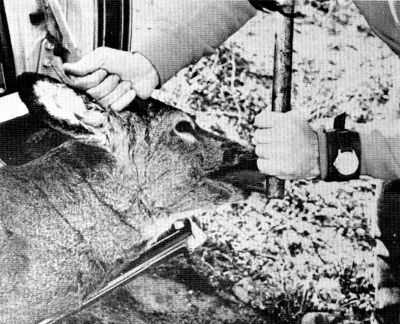
Figure 6.—All hunter-killed deer examined were
checked for age. (Photo courtesy of L. D.
Frenzel.)
We flew a total of 480 hours during this
and related research, mainly during January
through March 1967 and December 1968 through
March 1969; about one-third of this time was
devoted primarily to searching for kills. Jaws
were examined from 93 wolf-kills and 49 probable
wolf-kills.
Hunter-check stations yielded information
from 335 deer (fig. 6), and data on 98 additional
hunter-killed deer were contributed by
other hunters. Incisors were collected from 82
of 214 hunter-killed deer checked that were
older than yearlings; comparisons were then
made between ages of the deer based on incisor
sectioning and those based on field checks using
the wear method. Similarly, incisors were sectioned
from 195 wolf-killed and hunter-killed
deer older than yearlings that had been aged
by the tooth-wear method in the laboratory, so
that these two methods could be compared[Pg 40]
(Kuehn 1970). (Note: incisor-sectioning is unnecessary
for fawns and yearlings because animals
of these ages can be aged objectively by the
progress of tooth replacement.)
Because age or sex distributions might differ
in the various subsamples of deer examined during
this study, these parameters were compared
in subsamples of both wolf-kills and hunter-kills
(table 1). No significant differences were found
in the age or sex structures between the known
wolf-kills and "probable" wolf-kills, so these
subsamples were pooled and considered wolf-kills
for all subsequent comparisons.
Three significant differences in sex ratio were
found among the subsamples of wolf-kills: (1)
wolves killed more female fawns than male fawns,
but more male adults than female adults (table 2);
(2) more of the adults killed in the hunted
area were females, while in the wilderness more
males were taken (table 3); and (3) after
January 1969, when snow was unusually deep,
57 percent of the deer killed were females, compared
with only 38 percent before this date.
Table 1.—Results of statistical comparisons between various samples of deer
kills from northeastern Minnesota
| Sample size | Sample description | VS | Sample size | Sample description | Results of comparisons | Direction of difference | |
|---|---|---|---|---|---|---|---|
| Age structures[20] | Sex ratios[21] | ||||||
| Wolf-kills:[22] | Wolf-kills:[22] | ||||||
| 93 | Known | 49 | Probable | Nonsig.[23] | Nonsig. | — | |
| 42 | Jan.-Mar. 1967 | 83 | Dec. 1968-Mar. 1969 | Nonsig. | Nonsig. | — | |
| 66 | Male | 61 | Female | Nonsig. | — | — | |
| 50 | Wilderness area | 92 | Hunted area | Nonsig. | Nonsig. | — | |
| 41 | Adult, wilderness | 64 | Adult, hunted area | — | Sig., 99 percent | More females in hunted area | |
| 96 | Lakes[24] | 32 | Inland | Nonsig.[25] | Nonsig. | — | |
| 66 | Before Feb. 1969 | 77 | After Jan. 1969 | Nonsig.[26] | Sig., 95 percent | More females after Jan. | |
| 105 | Adults | 22 | Fawns | — | Sig., 95 percent | More female fawns | |
| Hunter-kills: | Hunter-kills: | ||||||
| 110 | Field aged, 1967 | 225 | Field aged, 1968 | Nonsig. | Nonsig. | — | |
| 335 | Field aged | 98 | Lab. aged | Nonsig. | Nonsig. | — | |
| 132 | Lab. aged, males | 79 | Lab. aged, females | Nonsig. | — | — | |
| 89 | Field aged, fawns | 246 | Field aged, adults | — | Sig., 95 percent | More male adults | |
| 433 | Hunter-kills | 142 | Wolf-kills | Sig., 99 percent | — | Older deer in wolf-kill | |
| 321 | Hunter-kills excluding fawns | 118 | Wolf-kills excluding fawns | Sig., 99 percent | — | Older deer in wolf-kill | |
FOOTNOTES:
[20] Kolmogorov-Smirnov two-sample test (Siegel 1956).
[21] Z test (Downie and Heath 1959).
[22] Because test showed no significant differences in age or sex
structure between sample of known wolf-kills and probable wolf-kills,
these were combined for all subsequent tests and the pooled sample
considered "wolf-kills."
[23] At 95 percent level or greater. (NOTE: Lack of a significant
difference does not prove that no difference exists. Rather, it means
only that the available evidence does not allow the positive conclusion
that a difference does exist.)
[24] Wolf-kills found on lakes were compared with those located inland
because of the possibility that kills on lakes may not be
representative of kills in general.
[25] Sample too small for test, but no apparent difference.
[26] No significant difference in entire age structures. However, when
the percentage of yearlings is compared between the two groups, the
difference is almost significant at the 95 percent level.
Table 2.—Sex ratios of hunter-killed deer and wolf-killed deer from northeastern Minnesota
| Age | Hunter-killed deer | Wolf-killed deer | ||||
|---|---|---|---|---|---|---|
| Number | Percent male | Percent female | Number | Percent male | Percent female | |
| Fawns | 108 | 50 | 50 | 22 | 41 | 59 |
| Adults | 315 | 68 | 32 | 105 | 54 | 46 |
In the comparisons of the subsamples of
hunter-kills, the only statistically significant difference
found was that the adult subsample had
a higher proportion of males than the fawn subsample.
No significant difference was found in
the age structures of the subsamples, so these
were all pooled into a sample of 433 hunter-kills
for comparison with the wolf-kills. For the same
reason, the entire sample of 142 wolf-killed deer
was used for a comparison with the hunter-killed
sample.
[Pg 41]
Table 3.—Sex ratios of wolf-killed deer from wilderness areas and from hunted areas
| Age | Wilderness area | Hunted area | Total | ||||||
|---|---|---|---|---|---|---|---|---|---|
| Number | Percent male | Percent female | Number | Percent male | Percent female | Number | Percent male | Percent female | |
| Fawns | 4 | 0 | 100 | 18 | 50 | 50 | 22 | 41 | 59 |
| Adults | 41 | 71 | 29 | 64 | 44 | 56 | 105 | 56 | 44 |
Wolf-killed deer in our sample, with an average
age of 4.7 years, were significantly older (99
percent level) than hunter-killed deer, with an
average age of 2.6 years. For example, deer 5
years of age and older made up 48 percent of
the wolf-kills but only 10 percent of the hunter-kills
(table 4). The oldest hunter-killed deer
in our sample was 9½ years old, but the oldest
wolf-killed deer was 14½ (fig. 7).
Because of a possible bias against fawns in
the method of collecting data from wolf-kills (to
be discussed later), the age structure of the
sample of wolf-kills excluding fawns was tested
against that of the sample of hunter-kills excluding
fawns. The result once again was a highly
significant difference between these two age
structures (table 1).
As an additional test of the degree to which
the age structure of the wolf-killed deer might
differ from that of the actual population, we
compared our wolf-kill age structure with the
age structure of a hypothetical deer population.
This was considered advisable just in case the
hunter-kill data were poorly representative of
the age structure of the actual deer herd. Several
hypothetical age structures were constructed and
compared according to advice from Downing.[27] In
all cases, the comparisons produced the same
basic results as the tests with the hunter-killed
sample. An example of one comparison is given in
figure 7.
A further result obtained by aging the wolf-killed
deer pertained to the young individuals
killed. The deciduous first incisors of fawns and
the deciduous premolars of yearlings are usually
replaced with permanent teeth by December
(Severinghaus 1949). Of 24 wolf-killed fawns
examined, however, three (13 percent) taken
during January, February, and March had not
yet replaced their deciduous first incisors. Of
the 13 yearlings found during this same period,
nine (70 percent) had failed to replace their deciduous
premolars, and two (15 percent) had
just replaced them (one deer killed in February
and one killed in March).
FOOTNOTES:
[27] R. L. Downing. Personal correspondence to L. D. Mech, October 2,
1969.
Table 4.—Age and sex distribution of deer killed by wolves and hunters in northeastern Minnesota
| Age (years) | Wolf-killed deer | Hunter-killed deer | ||||||||
|---|---|---|---|---|---|---|---|---|---|---|
| Number of: | Percent | Number of: | Percent | |||||||
| Males | Females | Unknown | Total | Males | Females | Unknown | Total | |||
| Fawns | 9 | 13 | 2 | 24 | 17 | 54 | 54 | 4 | 112 | 26 |
| 1+ | 5 | 7 | 1 | 13 | 9 | 63 | 26 | 1 | 90 | 21 |
| 2+ | 3 | 8 | 5 | 16 | 11 | 42 | 19 | 2 | 63 | 15 |
| 3+ | 2 | 4 | 2 | 8 | 6 | 47 | 16 | 1 | 64 | 15 |
| 4+ | 6 | 3 | 4 | 13 | 9 | 32 | 22 | 1 | 55 | 13 |
| 5+ | 12 | 9 | — | 21 | 15 | 15 | 12 | 1 | 28 | 6 |
| 6+ | 9 | 2 | 1 | 12 | 8 | 3 | — | — | 3 | — |
| 7+ | 12 | 4 | — | 16 | 11 | 7 | 4 | — | 11 | 3 |
| 8+ | 4 | 2 | — | 6 | 4 | 5 | 1 | — | 6 | 1 |
| 9+ | 4 | 2 | — | 6 | 4 | 1 | — | — | 1 | — |
| 10+ | — | 3 | — | 3 | 2 | — | — | — | — | — |
| 11+ | — | 1 | — | 1 | } 4 | — | — | — | — | — |
| 12+ | — | — | — | — | — | — | — | — | — | |
| 13+ | — | 1 | — | 1 | — | — | — | — | — | |
| 14+ | — | 2 | — | 2 | — | — | — | — | — | |
| Total | 66 | 61 | 15 | 142 | 100 | 269 | 154 | 10 | 433 | 100 |
[Pg 42]
Mandibles from the 142 wolf-killed deer and
259 hunter-killed deer were examined closely for
abnormal dentition (table 5, figs. 8-10) (Mech
et al. 1970) and pathological conditions (table 6),
and the lower limbs of 75 wolf-kills and 126
hunter-kills were also checked for abnormalities
and pathology (table 7, fig. 11). Statistical comparison
showed that the incidence of each condition
was significantly higher in the sample from
wolf-killed deer (table 8).
Jaw necrosis found in our specimens was
similar to that described by Murie (1944) for
Dall sheep and Mech (1966a) for moose. Generally
animals with this condition are old, and
ours were no exception.
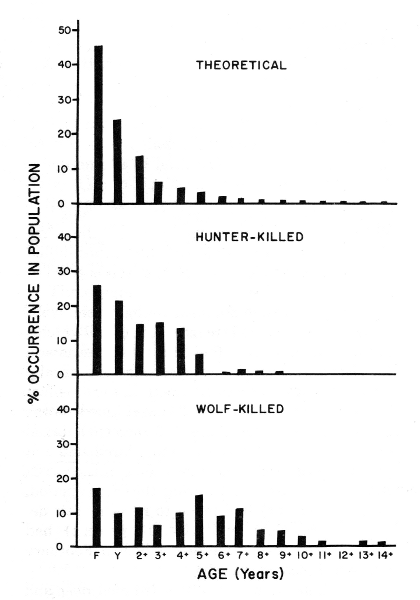
Figure 7.—Comparison between the age structures
of deer killed by wolves, deer killed by
hunters, and a theoretical population from the
same general area of northeastern Minnesota.
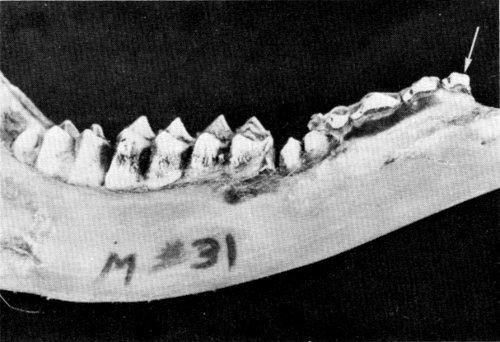
Figure 8.—Deciduous first premolar (arrow),
usually not present in deer, was found in
specimen M-31.

Figure 9.—A permanent first premolar (arrow)
was discovered in M-8.
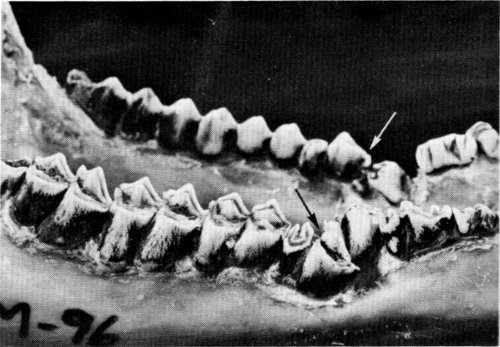
Figure 10.—An extra set of fourth premolars
(arrows) occurred in specimens M-96.
[Pg 43]
Table 5.—Abnormalities in the mandibular dentition of deer from the Superior National Forest, Minnesota
| Specimen number | Sex | Age[28] | Cause of death | Side of jaw[29] | Abnormality |
|---|---|---|---|---|---|
| Years | |||||
| M-8 | F | 3+ | Wolves | Right | P1 present (fig. 9) |
| Left | Normal; no P1 present outside or inside jaw | ||||
| M-31 | F | 17 mon. | Wolves | Both | Deciduous P1 present (fig. 8) and permanent P1 present inside left ramus; right side not examined internally |
| M-45 | M | 4+ | Wolves | Right | P2 rotated 90° |
| Left | P2 absent | ||||
| M-52 | M | 4+ | Wolves | Right | P2 absent |
| Left | Normal | ||||
| M-96 | F | 2+ | Hunters | Right | 2 permanent P4s present; both crooked in orientation (fig. 10) |
| Left | P2 diagonal; P3 normal; P4 below gumline, pointed posteriorly and wedged against M1; appears to have pushed out original P4 (fig. 10) | ||||
| M-117 | M | 5+ | Hunters | Right | Third column of M3 reduced |
| M-191 | M | 4+ | Wolves | Right | Third column of M3 absent although rudimentary root present |
| Left | Third column of M3 much reduced, peg-like, and almost separate | ||||
| M-225 | — | 4+ | Wolves | Right | P2 absent |
| Left | P2 situated diagonally | ||||
| M-234 | F | 5+ | Wolves | Right | Third column of M3 reduced |
| M-254 | M | 2+ | Hunters | Right | P2 slightly crooked in orientation |
| Left | P2 slanting posteriorly and crowding P3 | ||||
| M-272 | M | 5+ | Hunters | Right | Third column of M3 reduced, peg-like, and almost separate |
| Left | Third column of M3 peg-like and separated from second column by 4 mm. | ||||
| M-296 | F | 5+ | Wolves | Right | Normal |
| Left | Extra permanent P4 crowding original P4; much like M-96 | ||||
| M-369 | M | 3+ | Hunters | Right | Permanent P2 still not emerged but appears to be wedged against root of P3 |
FOOTNOTES:
[28] Based on incisor sectioning method of Gilbert (1966) except that
underlined figures are based on tooth replacement or wear (Severinghaus
1949).
[29] Where only one side is listed, the other was not available.
Table 6.—Pathological conditions in the lower jaws of deer
killed by wolves or hunters[30]
| Specimen number | Sex | Age | Cause of death | Approximate date of death | Condition |
|---|---|---|---|---|---|
| Years | |||||
| M-70 | M | 6½ | Wolves | Feb. 1968 | Lump in left side of mandible near M1 and M2 |
| M-192 | M | 7½ | Wolves | Jan. 1969 | Large lump in left diastema apparently from healed fracture |
| M-206 | M | 8½ | Wolves | Jan. 1969 | Light necrosis around base of teeth |
| M-218 | M | 3½ | Wolves | Feb. 1969 | Large lump in left diastema apparently from healed fracture |
| M-228 | F | 11½ | Wolves | Mar. 1969 | Heavy necrosis around molars and extending into bone; half of each M3 destroyed, both roots and crown |
| M-236 | F | 14½ | Wolves | Feb. 1969 | Light necrosis around base of teeth |
| M-402 | F | 10½ | Hunters | Nov. 1968 | Heavy necrosis and lumps on both sides of mandible |
FOOTNOTES:
[30] Not including dental abnormalities, which are described in table 5.
The following organs were excised from wolf-killed
deer and examined grossly in the field for
parasites and abnormalities (fig. 12): lungs (six
animals, normal); heart (seven animals, normal);
liver (four animals, one small unidentified tapeworm
cyst). Twin fetuses were found in each
of two adult does examined.
Twelve deer were checked for body fat in
one or all of the following areas: back (subcutaneous),
kidneys, heart, omenta. Of these animals,
seven had large amounts of fat, but five
were almost depleted of fat from these stores.
These five were all killed in February or March
1969; three were fawns, and two were yearlings
that had not yet shed their deciduous premolars.
Of 69 animals examined for femur marrow
condition, two had fat-depleted marrow. One
was a fawn killed in March 1969 that had not
shed its deciduous first incisors, and the other
was a 5½-year-old buck killed in February 1966.
A fawn and a yearling that had died in February
1969 from unknown causes also had fat-depleted,
marrow. These animals might have been killed
by wolves, for wolves had fed on them. However,
they could have died from malnutrition and
been eaten as carrion.
[Pg 44]
Table 7.—Pathological conditions in the lower limbs of deer killed by wolves or hunters
| Specimen number | Sex | Age | Cause of death | Condition |
|---|---|---|---|---|
| Years | ||||
| M-28 | M | 5½ | Wolves | Right hind foot: "Old healed ankylosis of the pastern joint ... a spontaneously healed bacterial arthritis with the destroyed joint cavity filled in by solid bone. This deer probably had defective gait"[31] (fig. 14). |
| M-29 | F | 5½ | Wolves | Front foot: "A 3×4×5 cm. fibrous mass in the subcutis about the digital flexor tendon on the volar surface of the metacarpus. The surface was denuded, ulcerated, and superficially infected by surface bacteria.... Probably did detract from the animal's speed of flight"[31] (fig. 15). |
| M-37 | F | 7½ | Wolves | Hind foot: "Probable that the lesion was at one time an active bacterial bone marrow infection that had eventually fistulated to the skin.... Regional tendons and their sheaths were also present among this inflammation and scarring, and it would be fair to assume that the animal's agility was impaired to some extent."[31] |
| M-115 | M | 4½ | Hunter | Right front hoof: Broken at tip. |
| M-196 | F | 4½ | Wolves | Left front foot: "Two severe transverse lacerations on the volar surface. Each was approximately 4 cm. in length. One was located at the margin of the heel, and the other was located several cm. proximad. The more proximal wound had severed the flexon tendons, and the consequent uselessness of the limb was suggested by the splayed toes, the unmarred hoof wall and unworn soles"[32] (fig. 16). |
| M-227 | M | 9½ | Wolves | Left hind leg: "A diffuse swelling of the distal metatarsal bone, the surface of which was studded with small osteophytic spicules. The major flexor and extensor tendons were forced to assume a convex course over the summits of the dorsal and plantar surfaces of the defect, but the tendon sheaths were clean and the normal wear on soles of the involved toes suggested that functional deficit and pain were probably minimal ... quite certainly a callus from previous fracture"[32] (fig. 17). |
FOOTNOTES:
[31] D. M. Barnes. Personal correspondence to L. D. Mech, April 11,
1967.
[32] D. M. Barnes. Undated laboratory report transmitted to L. D. Mech
in 1969.

Figure 11.—The jaws and legs of kills were inspected
closely for abnormalities. (Photo courtesy of L. D. Frenzel.)
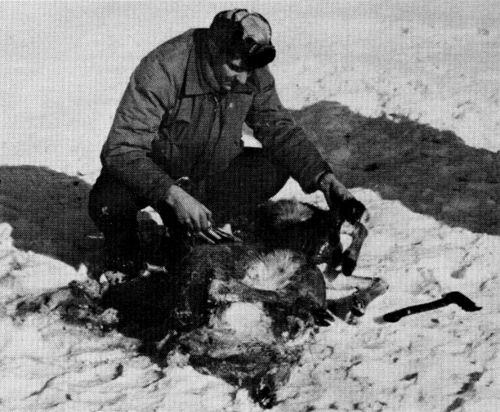
Figure 12.—When internal organs were present
in kills, they were examined in the field. (Photo
courtesy of L. D. Mech.)
DISCUSSION AND CONCLUSIONS
It has been established that wolves hunting
Dall sheep (Murie 1944), caribou (Crisler 1956),
moose (Mech 1966a), and other species usually
have a low percentage of success. In the case of
a pack of 15 wolves hunting moose on Isle Royale
during winter, only 4.6 percent of all the moose
detected by the pack were killed; considering
only the moose that the wolves caught up to
or held at bay, the kill rate was 7.6 percent
(Mech 1966a).
What little evidence there is about wolves
hunting deer indicates that the success rate is
also low with this prey species, at least in winter.
The senior author has now observed a total of
14 deer being chased by wolves in northeastern
Minnesota, mostly by packs of five, seven or
eight wolves (Mech 1966b, and see Mech et al.,
p. 1). In only one case (6.7 percent) did the
wolves (a pair) succeed in catching their prey.
Low hunting success rates imply that the
circumstances influencing hunts are seldom
favorable enough, or the prey animals encountered
are seldom vulnerable enough for the wolves
to succeed. When the evidence cited earlier
that most wolf-killed animals are inferior members
of their populations is considered, the most
cogent explanation for the low hunting success
of wolves is that relatively few prey animals
are vulnerable.
[Pg 45]
Table 8.—Incidence of various abnormalities and pathological
conditions in wolf-killed deer compared with that in hunter-killed deer
| Condition | Wolf-kills | Hunter-kills | Level of significance | ||||
|---|---|---|---|---|---|---|---|
| Deer in sample | Deer with condition | Deer in sample | Deer with condition | ||||
| Number | Number | Percent | Number | Number | Percent | Percent | |
| Dental abnormalities | 142 | 8 | 5.6 | 259 | 5 | 1.9 | [34]90 |
| Jaw necrosis, lumps, or fractures[33] | 142 | 6 | 4.2 | 259 | 1 | 0.4 | [34]95 |
| Pathology of lower limbs | 75 | 5 | 6.7 | 126 | 1 | 0.8 | 95 |
FOOTNOTES:
[33] Two mandibles from wolf-killed deer had large lumps from healed
fractures in the region of the diastemas.
[34] If all dental and jaw abnormalities are pooled, the difference
between the incidence in the wolf-kill sample (9.8 percent) and that in
the hunter-kill (2.3 percent) is significant at the 99 percent level.
Age Structure
Our data strongly indicate that in northeastern
Minnesota wolves prey much more heavily
on the older members of the deer population,
at least during winter (fig. 7). Substantial vulnerability
to wolves seems to begin at about the
age of 5 years (fig. 13), because the percentage
of wolf-killed deer in each year class increases
from 9 percent for 4½-year-old animals to 15
percent for 5½-year-olds (table 4). Indeed, 48
percent of the wolf-kills were aged 5½ and over,
which compares favorably with the Ontario figure
of 58 percent for these age classes (Pimlott et al.
1969).
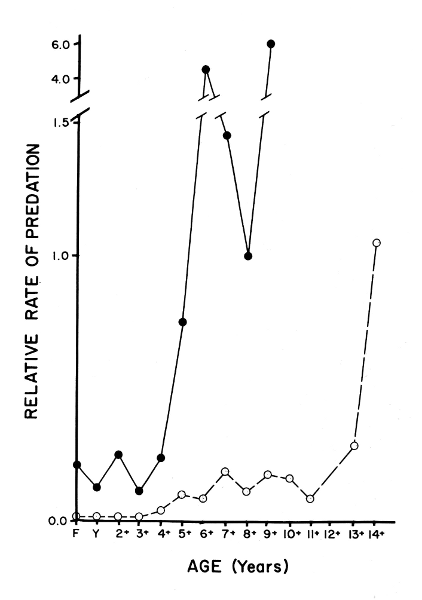
Figure 13.—Relative rates of predation on deer
of various ages, based on comparisons of the
ages of wolf-killed deer with those of a theoretical
population (dashed line) and those of
the hunter-killed population. See figure 7.
[Pg 46]
These figures assume added significance when
compared with a sample of deer killed by hunters
in the same general area (fig. 1). Only 10 percent
of the hunter-killed deer were 5½ years old or
older, and the percent killed in each year class
dropped off suddenly from 13 percent aged 4½
to 6 percent aged 5½. If the age structure of
the hunter-kill sample is reasonably representative
of the age structure of the population at
large, the wolf-kill data show that wolf predation
in our study area during winter has a definite
selective effect on the deer population.
There is no direct way of knowing that the
age structure of the hunter-killed deer represents
the age structure of the deer population at large.
However, sampling hunter-kills is the most practical
means available for gaining an index to the
age structure of the existing herd. Further, there
are three indirect pieces of evidence indicating
that the hunter-kill sample represents the actual
age structure of the population, just as Maguire
and Severinghaus (1954) found in New York.
First, our sample has the basic theoretical form
expected of a stable deer herd; i.e., the youngest
year class contained the most members, and each
older cohort included fewer (fig. 7). Second,
the age structure of our sample has the same
form as most other deer age structures from
widely diverse areas, (Ontario, Pimlott et al. 1969;
southern Minnesota, Erickson et al. 1961; Massachusetts,
Shaw 1951). Third, there is no reason
to believe that in our area rifle hunting is
especially selective for any particular age classes.
In talking with large numbers of hunters, we
have learned that most shoot at any and all deer
they happen to see.
Even if the age structure of the hunter-kill
sample did not approximate that of the actual
herd, the comparison of the wolf-kill with the
theoretical population dictates the same conclusion:
the rate of kill of older deer by wolves
was several times greater than that of younger
deer, excluding fawns (fig. 13). In any case,
if the actual deer population in our study area
had an age structure similar to that of our sample
of wolf-kills (which would be the only age structure
that would contradict our conclusion), its
numbers would be declining by orders of magnitude
each year, and there would now be only a
remnant population. Such obviously is not the
case.
The only other question that might arise from
a comparison of the age structure of our wolf-killed
deer with that of the hunter-killed deer
concerns the area from which each sample was
taken. Fifty of our wolf-kills came from a region
almost inaccessible to hunters (fig. 1). However,
the other 92 came from the same general area
as the hunter-kills. Nevertheless, there was no
statistically significant difference in age structure
between the wolf-kills from the wilderness versus
those from the hunted area (table 1). This fact
also suggests that the human hunting in the
area is relatively light and has little effect on
the age structure of the deer population in the
area.
Wolves may also be taking a disproportionately
high number of fawns, although our data
do not show this. Nevertheless, there may be
a bias against fawns in our method. It is not
unusual to discover the remains of a wolf-killed
deer so completely eaten that there is no indication
left of the animal's age. Because fawns often
are only about half the size of adult deer, and
their skeletons have not yet completely ossified,
the chances are better that fawns will be more
completely eaten. Pimlott et al. (1969) also
recognized this possible bias, although their
data did indicate that wolves were killing a
higher percentage of fawns than occurred in the
population.
Our study does support the other conclusion
of Pimlott et al. (1969), based on a study of
331 kills, that wolf predation on deer during
winter shows a definite selection for older animals.
It does not agree with the tentative conclusion
of Stenlund (1955) that wolves in the
Superior National Forest do not prey disproportionately
on old deer. However, Stenlund's conclusion
was based on 36 kills and on the assumption
that only deer at least 7 years old were
"old." Deer 5 years old and older composed 33
percent of Stenlund's sample, a figure considerably
higher than the 10 percent in these age
classes in our hunter-kill sample (table 4). Thus
Stenlund's data do not contradict our conclusion.
The age of 5 years seems to be the beginning
of the period of vulnerability for adult deer.
Although 5 years might not seem especially old,
there are two aspects of significance concerning
deer of this age and older. First, they are in
the second half of the life span for most members[Pg 47]
of the species, and their alertness and ability to
bolt quickly away might be expected to decline.
It is of interest in this regard that Klein and
Olson (1960, p. 87) believed 5 years of age to
be "the upper limit of physiological efficiency"
of black-tailed deer (Odocoileus hemionus) in
Alaska. Second, up to the age of at least 4½
years, and perhaps beyond, the apparent weight-load-on-track
of deer increases with age (Kelsall
1969). Thus older deer would sink farther into
the snow than younger ones, and their escape
might be slowed and hindered more. For further
discussion of the effect of snow on the vulnerability
of deer, see Mech et al. (p. 51).
Sex Ratio
Statistical tests comparing a number of subsamples
of both wolf-killed deer and hunter-killed
deer showed a series of significantly different
sex ratios (tables 1)-3.
The ratio of males to
females in the fawn cohort of the hunter-kill,
which is probably the most representative of the
actual fawn sex ratio, was even (table 2). With
wolf-kills, however, a significantly higher percentage
of females was taken in the fawn subsample
(59 percent) than in the adult subsample
(46 percent). These results compare favorably
with those of Stenlund (1955), who found that
from 1948 to 1953 in the same area as the present
study 68 percent of 19 sexable fawn wolf-kills
were females and 44 percent of 63 sexable adult
wolf-kills were females.
If the sex ratio of fawns began even, and
more females than males were killed by wolves,
then a higher proportion of males would be left
in the adult population, unless some other mortality
factor kills more male fawns. Thus it is
not surprising that in the wilderness area, where
little or no hunting is done, the sex ratio of wolf-kills
in the adult cohort is significantly heavy
toward males (71 percent: 29 percent). This
was also true of the wolf-kills in Algonquin Provincial
Park, where males made up 57 percent
of the total sexable wolf-kill (Pimlott et al. 1969).
The latter figure may even have been higher if
calculated for adults alone, for a preponderance
of female fawns in the Algonquin Park data
(such as occurred in our and Stenlund's samples)
would tend to obscure the preponderance of
males in the adult sample.
The adult subsample of hunter-kills also contained a higher
percentage of males (66 percent : 34 percent). Although this might also
reflect the influence of wolf predation on female
fawns, it probably is more a result of the greater
movement of bucks during the hunting season,
which overlaps with the rutting season. Even
the sex ratio of adult deer killed in wolf-free
areas shows a preponderance of males (Erickson
et al. 1961).
However, it appears that the higher harvest
of bucks by human hunters does markedly affect
the sex ratio of the deer population in the hunted
area, for the wolf-kill of adults in that area contained
a significantly higher percentage of does
(56 percent) than did the wolf-kill of adults in
the wilderness area (29 percent).
Evidently the hunter harvest is not heavy
enough to affect the age structure of the deer
population to any marked degree, for no significant
difference in age structure was found between
the wolf-kill in the hunted area and that
in the wilderness area (table 1). This does not
conflict with the conclusion that hunting affects
the sex ratio of the deer herd, because it would
take much less to influence a population characteristic
having two classes (sex) than one
having 14 (age).
One additional difference in the sex ratio was
found between two other subsamples of the wolf-kill—that
is, the wolf-kill before and after
an unusually high snow accumulation, which
reached its peak about February 1, 1969 (table 1).
Of a total of 77 animals killed before this
snow condition occurred (including those from
previous years), 38 percent were females. Of
44 animals killed after the heavy accumulation,
57 percent were females. One possible explanation
for this is that females may normally be
less vulnerable to wolf predation, for Kelsall
(1969) has shown that they probably have a
lighter weight-load-on-track than males. Thus
when snow conditions changed greatly, making
deer generally much more vulnerable to wolves
(see Mech et al., p. 35), a preponderance of does
suddenly might have become available. There
is some evidence that does may be generally
less vulnerable under most conditions, for all
seven of our wolf-killed deer over 10 years old
were females, and the oldest was over 14.
[Pg 48]
Condition of Wolf-Killed Deer

Figure 14.—Arthritis in right hind foot of specimen
M-28. (Photo courtesy of University of
Minnesota Veterinary Diagnostic Laboratory.)
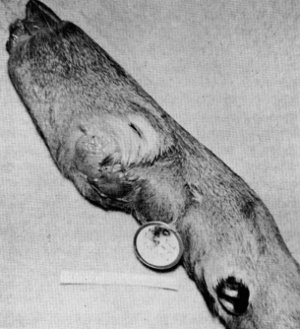
Figure 15.—Infection and fibrous mass in a front
foot of specimen M-29. (Photo courtesy of
University of Minnesota Veterinary Diagnostic
Laboratory.)
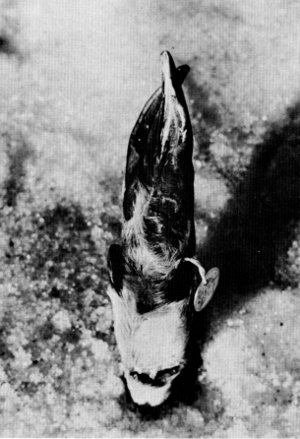
Figure 16.—Injury to left front foot of specimen
M-196. (Photo courtesy of L. D. Mech).
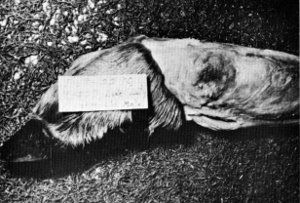
Figure 17.—Healed fracture of left hind leg of
specimen M-227. (Photo courtesy of University
of Minnesota Veterinary Diagnostic
Laboratory.)
Because the data show that wolves in our
study area tend to kill a disproportionate number
of older deer, it is not surprising to discover
that wolves also tend to capture a disproportionate
number of individuals with abnormalities
and pathological conditions (table 8). The explanation
for such selection is obvious in regard
to the abnormalities of the lower limbs (figs. 14-17): deer with injured or abnormal limbs
simply cannot run as fast or as agilely as normal
animals (table 7). Our observations show that
deer usually depend on their alertness and speed
to escape approaching wolves (Mech 1966b,
Mech et al., p. 1). Any trait or condition that
tended to interfere with either alertness or speed
would decrease an individual's chance of escape.
It is more difficult to explain how dental
abnormalities or pathological conditions of the
mandible (figs. 8-10) would predispose an individual
to wolf predation. However, in the case
of dental abnormalities the genetic or environmental
conditions that caused the abnormality
might also have caused some other trait that
increased the animal's vulnerability. Or the
abnormal condition itself may have caused a
further, more critical, disruption of the animal's
physiology or behavior, which in turn predisposed
it to wolf predation.
The finding of several wolf-kills with poor
fat stores could indicate that primary or secondary
malnutrition was a factor in the animals'
deaths. However, it would take a statistical
comparison between the fat stores of the deer
at large and those of the wolf-kills to establish
this.
The discovery that 13 percent of the fawns
and 84 percent of the yearlings killed during
January, February, and March had not yet shed
their deciduous incisors and premolars, respectively,
also fits well with the rest of our information.
Evidently some unusual factor had
caused the delay in tooth development and replacement.
One possibility is that the animals
were born in August or September, much later
than normal. Although most deer in Minnesota
are born in May and June, there are records of
births in July and August. In addition, a fetus
181 to 200 days old was found in a doe killed on
September 26 (Erickson et al. 1961).
An alternate explanation for the delay in
tooth replacement is that the animals were suffering
from malnutrition or nutrient deficiency.
Severinghaus[35] has evidence that yearling bucks
that have not replaced their deciduous premolars
during November, and thus are aged at 17
months (Severinghaus 1949), generally have
shorter, narrower antlers and fewer points than
18-and 19-month-old individuals. Degree of
antler development in turn is considered related
to nutritional state (Latham 1950). Thus it is
reasonable to conclude that animals behind in
tooth development and replacement, whether this
is caused by age or diet, are physiologically
inferior.
Most of the abnormal conditions discussed
above pertain to the skeletal parts of wolf-kills.
If the soft parts of a large number of kills could
be examined thoroughly, one might discover a
much higher incidence of diseases and other
pathological conditions.
In conclusion, our data on both age and condition
of wolf-killed deer show that at least
during winter, wolves in our study area usually
do not kill just any deer they discover, although
they do try to. Evidently, most deer can usually
escape wolf predation. The most frequent exceptions
are those 5½ years old and older, those
born late, those suffering from poor nutrition,
those with abnormalities or pathological conditions,
and possibly fawns.
The above conclusions parallel those of Murie
(1944), Crisler (1956), Mech (1966a), and
Pimlott et al. (1969) for wolves preying on Dall
sheep, caribou, moose, and deer respectively, and
further substantiate the claim by Mech (1970)
that they can be extended to wolves preying on
most, if not all, species of large mammals under
most conditions. It is also apparent from the
data presented above that deer over 5 years of
age and those with abnormalities of the jaw or
lower limbs represent such a small percentage
of the total population that they are seldom
taken by human hunters. In this respect, competition
between timber wolves and human hunters
appears to be minimal in the study area.
FOOTNOTES:
[35] C. W. Severinghaus. Unpublished data.
[Pg 49]
[Pg 50]
SUMMARY
White-tailed deer (Odocoileus virginianus)
killed by wolves (Canis lupus) during winter in a
relatively unhunted wilderness area and in an immediately
adjacent hunted area of Minnesota
were compared with deer killed by hunters in
the same general area, and with a hypothetical
population. Deer killed by wolves were significantly
older. Statistical comparisons also showed
the following: (1) hunters generally killed an
even sex ratio of fawns, and a disproportionate
number of adult bucks, (2) wolves took a higher
percentage of female fawns than female adults,
a disproportionate number of bucks in the wilderness
area, and a higher percentage of does
in the hunted area. The latter fact evidently
reflects the higher hunter success on males in
the hunted area. Significantly higher incidences
of abnormalities and pathological conditions of
both mandibles and lower limbs were found in
wolf-killed deer than in hunter-killed deer, and
these conditions are described. It is concluded
that wolf predation on white-tailed deer in the
study area during winter generally is selective
in that it tends to remove members of the prey
population that are old, debilitated, or abnormal.
Apparently these classes of deer represent such
a small percentage of the population that they
are seldom taken by human hunters.
ACKNOWLEDGMENTS
This study was supported by Macalester
College, the New York Zoological Society, the
Minnesota Department of Conservation, the
USDA Forest Service, and the U.S. Bureau of
Sport Fisheries and Wildlife. Pilots Robert
Hodge, Pat Magie, John Winship, Jack Burgess,
Don Murray, and Walt Neumann aided substantially
in obtaining jaws from wolf-killed deer.
Students from the Macalester College Biology
Department and personnel of the USDA Forest
Service and the Minnesota Department of Conservation
helped secure mandibles from both
wolf-killed and hunter-killed deer. The interest
of Mr. John E. Peninger and of many deer
hunters in contributing the jaws is also greatly
acknowledged.
Mr. David W. Kuehn sectioned the incisors
of the deer jaws and determined their ages. Dr.
Donald M. Barnes of the University of Minnesota
Veterinary Diagnostic Laboratory examined the
abnormal lower limbs, described their pathology,
and provided photos of specimens used herein.
Mr. Wallace C. Dayton and Miss Elizabeth
Dayton and the Quetico-Superior Foundation,
all of Minneapolis, financed Mech during the
preparation of this paper.
The following individuals read the manuscript
and offered many helpful suggestions: Mr. R. L.
Downing, Mr. C. W. Severinghaus, Mr. J. M.
Peek, Dr. C. T. Cushwa, Mr. M. H. Stenlund,
and Dr. R. R. Ream.
LITERATURE CITED
Crisler, Lois. 1956. Observations of wolves hunting
caribou. J. Mammal. 37: 337-346.
Downie, N. M., and Heath, R. W. 1959. Basic
statistical methods. 289 p. New York: Harper
and Bros.
Erickson, A. B., Gunvalson, V. E., Stenlund,
M. H., Burcalow, D. W., and Blankenship,
L. H. 1961. The white-tailed deer of Minnesota.
Minn. Dep. Conserv. Tech. Bull. 5, 64 p.
Gilbert, F. F. 1966. Aging white-tailed deer by
annuli in the cementum of the first incisor.
J. Wildl. Manage. 30: 200-202.
Kelsall, J. P. 1969. Structural adaptations of
moose and deer for snow. J. Mammal. 50: 302-310.
Klein, D. R., and Olson, S. T. 1960. Natural
mortality patterns of deer in southeast Alaska.
J. Wildl. Manage. 24: 80-88.
Kuehn, D. W. 1970. An evaluation of the wear
method as a criterion for aging white-tailed
deer. M.S. Thesis., Univ. Minn.
Latham, R. M. 1950. Pennsylvania's deer problem.
Penn. Game News, Spec. Issue 1. (Cited
from: Allen, D. L. 1962. Our Wildlife Legacy.)
Maguire, H. F., and Severinghaus, C. W. 1954.
Wariness as an influence on age composition
of white-tailed deer killed by hunters. N. Y.
Fish and Game J. 1: 98-109.
Mech, L. D. 1966a. The wolves of Isle Royale.
U.S. Nat. Park Serv. Fauna Ser. 7, 210 p.
Mech, L. D. 1966b. Hunting behavior of timber
wolves in Minnesota. J. Mammal. 47: 347-348.
Mech, L. D. 1970. The wolf: the ecology and
behavior of an endangered species. 389 p.
New York: Natural History Press, Doubleday.
Mech, L. D., Frenzel, L. D., Jr., Karns, P. D., and
Kuehn, D. W. 1970. Mandibular dental anomalies
in white-tailed deer from Minnesota.
J. Mammal. 51: 804-806.
Murie, A. 1944. The wolves of Mount McKinley.
U.S. Nat. Park Serv. Fauna Ser. 5, 238 p.
Pimlott, D. H., Shannon, J. A., and Kolenosky,
G. B. 1969. The ecology of the timber wolf
in Algonquin Provincial Park. Ont. Dep. Lands
and Forests Res. Rep. (Wildl.) 87, 92 p.
Ryel, L. A., Fay, L. D., and Van Etten, R. C.
1961. Validity of age determination in Michigan
deer. Mich. Acad. Sci., Art, and Letters
46: 289-316.
Severinghaus, C. W. 1949. Tooth development
and wear as criteria of age in white-tailed deer.
J. Wildl. Manage. 13: 195-216.
Severinghaus, C. W. 1955. P. R. Rep. W-28-R-9:
Job 1A, April 13, 1955.
Shaw, S. P. 1951. The effect of insufficient harvests
on an island deer herd. N.E. Wildl.
Conf. (Mimeo).
Siegel, S. 1956. Non-parametric statistics for
the behavioral sciences. 312 p. New York:
McGraw-Hill.
Stenlund, M. H. 1955. A field study of the
timber wolf (Canis lupus) on the Superior
National Forest, Minnesota. Minn. Dep. Conserv.
Tech. Bull. 4, 55 p.
[Pg 51]
THE EFFECT OF SNOW CONDITIONS ON THE VULNERABILITY
OF WHITE-TAILED DEER TO WOLF PREDATION
L. David Mech, L. D. Frenzel, Jr., and P. D. Karns
Wolves (Canis lupus) and deer (Odocoileus
virginianus) having evolved together, no doubt
have become adapted to contending with each
other's physical abilities. Thus it is not surprising
to learn that deer which succumb to wolf
predation are generally weaker, older, or abnormal
compared with the total deer population
(Pimlott et al. 1969, also see Mech and Frenzel,
p. 35).
However, the structural and behavioral adaptations
of both species must have evolved under
environmental conditions that are average or
usual; otherwise, an adjustment of wolf to deer
populations, and vice versa, could not have been
maintained over long periods. This implies that
extreme or unusual conditions might sometimes
occur, to which either the wolf or the deer is
poorly adapted.
One of the most important environmental
factors that can influence the interactions of
wolves and deer is snow. The total fall, depth
on the ground, and the density are all aspects
of snow that may vary considerably and affect
the ability of wolves to capture deer. Recent
studies of wolves and deer in northeastern Minnesota
(see Mech et al., p. 1, also Mech and
Frenzel, p. 35) afforded us opportunities to investigate
the relationships between snow and the
interactions of wolves and deer.
METHODS
Two principal methods of study were used
in this investigation. The first involved recording
the snow depth and support quality ("penetrability")
in feet and tenths of feet (Verme 1968).
Snow measurements were taken during the winters
of 1966-67, 1967-68, and 1968-69, in which
large differences in snow conditions existed. Ten
such measurements were made weekly near Isabella,
Minnesota, in an open aspen (Populus
tremuloides) stand away from influences that
might have caused drifting or other unusual snow
conditions; the measurements were averaged.[Pg 52]
Penetrability was determined with Verme's snow-compaction
gauge—a 3-foot piece of 1-1/8-inch
(outside diameter) copper tube filled with lead
to total 3 pounds, which gives a weight per area
of 211 gm./cm.2. To obtain a measurement, the
pipe is held vertically with its lower end just
flush with the snow, and then is released. The
depth to which it sinks is considered the penetrability
of the snowpack by a walking deer.
Although the snow conditions measured at
Isabella are not representative of the entire study
area, year-to-year comparison in the Isabella area
should also apply generally throughout the
region.
The second technique used in this study was
observing the movements of wolves and deer.
This was usually done from low-flying aircraft,
and was facilitated by the use of radiotracking,
as described by Mech et al. (p. 1). Close inspection
of wolf-killed deer was made from the ground
(Mech and Frenzel, p. 35).
RESULTS AND OBSERVATIONS
Snow measurements for each winter are
shown in figures 1 through 3. The winter of
1968-69 was the most extreme of the three in
terms of accumulated snow, and was generally
regarded as having one of the heaviest snowfalls
and accumulations on record for the study area.
Snow depth on the level near Isabella reached
3.9 feet at one time, and from January 3 to
April 4 it exceeded 2.4 feet. The highest snow
level reached during 1966-67 was 2.4 feet, and
the highest level reached during 1967-68 was 1.4
feet. In the vicinity of Ely, some 30 miles from
Isabella, the 1968-69 peak accumulation was 39
inches, the highest accumulation since 1948-49
when records were first kept.[36] Thus we consider
the winters of 1966-67 and 1967-68 to be within
the normal range for the study area, and the
1968-69 winter as being most unusual (fig. 4).

Figure 1.—Snow depth and penetrability by deer
and wolves near Isabella, Minnesota, 1966-67.
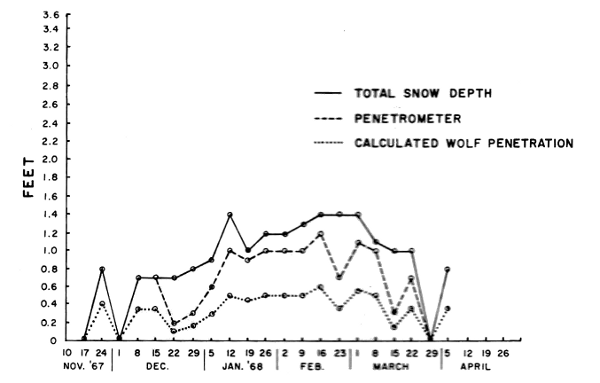
Figure 2.—Snow depth and penetrability by deer
and wolves near Isabella, Minnesota, 1967-68.

Figure 3.—Snow depth and penetrability by deer
and wolves near Isabella, Minnesota, 1968-69.
The snow penetrability in 1966-67 remained
high throughout January, February, and March.
During the following winter, penetrability fluctuated
more, but even at its greatest, it was relatively
unimportant to deer because the total[Pg 53]
snow depth was so low. During 1968-69, however,
penetrability was a very important aspect
of snow condition. It was so high during late
January and early February, when snow accumulation
was also at its peak, that a walking
deer would be expected to sink in 2.5 to 3.5 feet.
Snow penetrability then decreased through February
and March to a point where a walking
deer would sink in approximately 0.6 foot on
March 21. However, because snow accumulation
remained so high through February and March,
the lower penetrability during late February and
March still afforded no relief to running deer,
because they must exert forces several times as
great as when walking. On the contrary, the low
penetrability (which is an indirect measure of
density) could be expected to hinder a running
deer in deep snow, for it would cause much more
resistance.

Figure 4.—During the winter of 1968-69, the
snow was unusually deep in the study area.
(Photo courtesy of L. D. Frenzel.)
Deer movements, like snow conditions, varied
greatly during the three winters of the study.
During the first two winters, deer were generally
found singly and in groups of two to six, often
around the shores of lakes but also scattered
about inland. In late January and February
1967, running deer were observed sinking deeply
into snow, but their movements still did not
seem to be hindered, no doubt because of the
high penetrability (low density) of the snow
that year (fig. 1).
However, during late January, February, and
March of 1969 the deer were much more concentrated,
mostly in conifer swamps, along
southwest-facing slopes, or on lakes. Although
groups of two or three animals could be found
in scattered inland "pockets" throughout the
winter, groups of five or six were not uncommon
on lakes during January. The tendency to concentrate
continued to increase, and on February
6, as many as 11 deer were observed on one lake;
by March 13, group size had increased to as high
as 22 deer in the same area. Throughout February
and March, heavy concentrations of deer
tracks covered most wilderness lakes, further
evidencing much greater use of shorelines than
had occurred in the two previous winters (fig. 5).
No doubt deer tended to concentrate on lakes
because travel inland became so difficult. On
January 28, two deer were seen plowing through
snow up to their necks. Although the snow began
settling in February, and the penetrability decreased,
by late February running deer still
plunged chest-deep and had to hesitate at every
bound. These conditions persisted until about
March 26, by which time a surface crust strong
enough to hold a running deer had formed.

Figure 5.—Under unusually deep snow conditions,
deer used lake shores heavily. (Photo
courtesy of L. D. Mech.)
[Pg 54]
In considering wolf mobility in snow, two
types of movement must be recognized: the trot
used during general travel, and the bounding
used while chasing prey. The trot is an easy gait
of about 5 m.p.h. on firm footing (Mech 1970),
and can be continued for hours at a time. During
periods of deep snow and high penetrability,
most wolf travel is on frozen waterways, roads,
snowmobile trails, and animal trails, including
the wolves' own pathways, which become well
packed with frequent use (fig. 6, 7A, B). Such
travel was observed during each of the three
winters of this study.
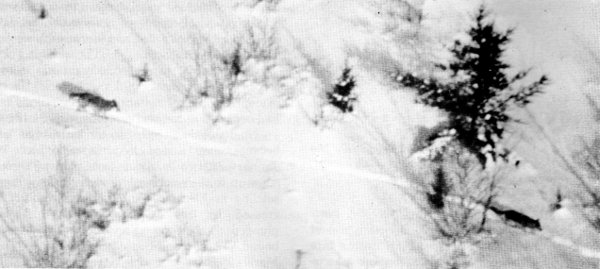
Figure 6.—Wolves travel single file in deep snow. (Photo courtesy of L. D.
Mech.)

Figure 7.—(A) A single wolf must break his own trail through the snow.
(Photo courtesy of L. D. Frenzel.) (B) Regular use by a pack keeps trails
open. (Photo courtesy of L. D. Mech.)
The second type of wolf movement affected[Pg 55]
by snow is the leaping and bounding associated
with chasing prey. The shallower angle of the
wolf's bound (fig. 8) (compared with that of the
deer) often causes the wolf to flounder in snow
that presents little hinderance to deer (Mech
1970). Such was the case in January and February
1967 in our study area. During 1967-68
no observations of wolves chasing deer were made
by the authors, but reports by other field workers
indicated that running conditions were similar
to those of 1967.

Figure 8.—Wolves run at a shallow angle, thus hindering them in deep snow.
(Photo courtesy of D. H. Pimlott.)
During the winter of 1968-69, wolves also
bogged down a great deal in snow when chasing
deer. However, after January 1969 the snow
was so deep that deer were floundering even more
than wolves in many cases. The fact that wolves
could run in the trail broken by deer probably
also gave the wolves an advantage under the conditions
that severely restricted deer movements.
The above observations of snow conditions,
deer movements, and wolf movements during the
three winters of the study are in accord with
observations made on the differences in the ability
of the wolves to capture deer during the same
period. Two indices support the conclusion that
wolves had a much easier time catching deer
during February and March 1969 than earlier
in the winter and in the two previous winters:
(1) the degree of utilization of wolf-killed deer,
and (2) the kill rate of radiotagged wolves.
During the winters of 1966-67 and 1967-68,
and in December and early January 1968-69, most
wolf-killed deer found had been thoroughly eaten,
and the bones—if present at all—were well
chewed and scattered at each kill (fig. 9). All
skin and flesh from the skull were eaten, and
the mandible was usually separated from the
skull. During late February and early March
1967, few fresh kills were even found, and wolves
were returning several times to old kills that had
been cleaned up many days before.
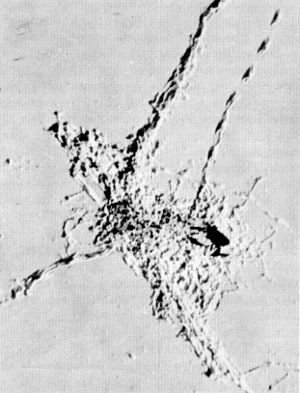
Figure 9.—Usually the remains of a wolf kill are
well chewed and scattered before the wolves
abandon them. (Photo courtesy of L. D.
Mech.)
However, in late January 1969 a substantial
change began taking place. The skeletons of
most kills found were almost intact, the flesh
having been eaten from around the bones (fig. 10).
Appreciably more skin was usually left on
the carcass, especially on the side lying on the
snow, and the neck and head were generally
intact. This was true even of fawns, which in
the past often were almost completely consumed.
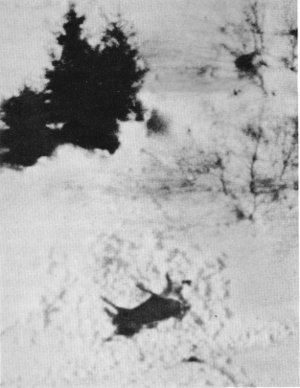
Figure 10.—During a period of especially deep
snow, wolves abandoned many kills before
pulling apart the skeletons. (Photo courtesy
of L. D. Mech.)
In several cases, only about half of the flesh
had been eaten from the carcasses. On February
2, 1969, four deer recently killed by wolves were
found along a 1½-mile stretch of Birch Lake[Pg 56]
and nearby Polaris Lake (Minnesota-Ontario
border). One large doe was completely uneaten
and remained so for at least 24 hours after discovery
from the air. Further, one fawn had only
a few pounds of flesh eaten, a yearling doe was
half eaten, and another fawn was about 75 percent
eaten. Hazardous landing conditions during
this period severely limited the number of carcasses
that could be examined from the ground,
but on February 6 a yearling doe was discovered
that had only about 5 to 10 pounds of flesh eaten,
and on February 8 an adult doe was found that
was completely intact except for wounds.
In past winters some kills had been located
that had been only partly eaten, but in each
case the carcasses were soon revisited and cleaned
up (Mech 1970). This was often not the case
in 1969. For the rest of the winter most of the
deer killed by wolves in our study area were not
as completely consumed as in previous winters.
Pimlott et al. (1969) found a similar relationship
between the severity of the winter and the degree
to which wolf-killed deer were utilized.
Correlated with the above information was
the kill history of our radiotagged wolves (Mech
et al., p. 1). From December 1968 through January
1969 No. 1051 had killed three or possibly
four deer, and generally had spent 6 or 7 days
feeding on each. However, throughout most of
February this animal visited a new deer carcass
(which presumably he killed) every 3 days, and
he spent only 1 or 2 days at each. In two cases
two new carcasses were found in the immediate
vicinity of this animal during the same day, and
in each case the wolf spent only 1 day in the
area. A second wolf (1053) which had spent
most of December and January scavenging on
the remains of both deer and moose (Alces alces)
that had died long before, made her first known
kill of a deer on January 31, 1969. The kill rate
of the other three radiotagged wolves also increased,
although the data for them are less complete.[Pg 57]
The average kill rate for all radiotagged
wolves and their associates was one deer per
wolf per 16 to 20 days before February 1, and
one per 8 to 12 days after February 1 (see Mech
et al., p. 1).
FOOTNOTES:
[36] M. H. Stenlund. Personal correspondence to L. D. Mech, Oct.
10, 1969.
DISCUSSION AND CONCLUSIONS
Under usual snow conditions throughout most
of the range of the white-tailed deer, healthy
vigorous individuals can probably escape most
attacks by wolves. Observations by Mech (1966),
Rutter and Pimlott (1968), and Mech et al. (p. 1)
indicate that a high percentage of attempts
by wolves to kill deer during winter are unsuccessful.
This is further implied by the figures
of Pimlott et al. (1969) and Mech and Frenzel
(p. 35) showing that at least during winter
wolves tend to kill a disproportionate number of
old deer as well as those with various abnormalities
and pathological conditions.
However, during a winter with extremely deep
snow, the usual relationships seem to change
somewhat. Fewer deer are able to escape wolves,
and a surplus is killed. This means that some
individuals not vulnerable under the usual snow
conditions become vulnerable during extreme
conditions. There are two main possible reasons
for this, the effect of the extreme weather conditions
on the health and vigor of the deer, and
the physical effect of the snow on the escapability
of the deer.
In regard to the first possibility, there was
limited evidence that during February and March
1969 some fawns and yearlings in our study area
were losing their fat stores. Two of three yearlings,
and both fawns intact enough for examination
during this period lacked back fat, and
the marrow in one of six fawn femurs was partly
fat depleted. Nevertheless, the third yearling
inspected still had back fat, and a 3½-year-old
doe had heavy omental, renal, heart, and back
fat during the same period. Thus, although an
abnormal decline in the physical condition of
some deer in the late winter might partly account
for the increased kill by wolves during February
and March 1969, the effect of snow on the escapability
of the deer probably was also involved.
The key difference in snow conditions between
the two periods—(1) the winters of 1966-67,
1967-68, and December-January 1968-69, and
(2) February and March 1969—was the heavy,
persisting accumulation of snow during the latter
period, combined with the increasing density of
the snow. As our observations show, this greatly
hindered the movements of deer fleeing from
wolves.
Under more usual conditions, a running deer
might sink through the snow to the ground and
thus obtain a firm footing from which to spring
again. In discussing wolf-caribou relations in
snow, Kelsall (1968, p. 249) stated the following:
"While caribou (Rangifer tarandus) will sink
into snow even deeper than wolves, their longer
legs permit them to run efficiently where a wolf
will bog down. Nasimovich (1955) considered
that roe deer and sika deer could be taken by
wolves when snow was not more than 30 cm.
(11.8 inches) in depth. At depths above that
their pursuit becomes difficult or fruitless."
However, it appears that when snow becomes
extremely deep, wolves then gain the advantage.
With 22 to 48 inches or more of snow to plow
through, a deer would have trouble even touching
a firm foundation. According to Kelsall
(1969), deer measure only 20 to 24 inches from
hoof tip to chest, with legs extended.
It is true that wolves stand even shorter
than deer and so might be expected to flounder
even more. However, this is where another factor
becomes important, the "weight-load-on-track"
or total weight per area of track. As Kelsall
(1969) has pointed out, the mean weight-load-on-track
for deer is extremely difficult to measure
directly, because the actual under-surface of the
deer's foot slants vertically, and a much greater
area may be used to support an animal in snow
than on a hard surface. This probably explains
the discrepancy between Kelsall's measurements
and work done by Verme (1968) in Michigan.
According to Kelsall, deer weight-load-on-track
(hoof only) varies between 431 and 1,124
gm./cm.2. However, Verme stated that his compaction
gauge (with a weight load of about 211
gm./cm.2, described earlier in this paper) sank
in virtually the same amount in snow as did deer.
Under the snow conditions in our study area,
we found that the same type of compaction gauge
generally penetrated to a depth within a half
inch of that to which deer were sinking. On this
basis, it seems reasonable to suggest that a deer
in snow is supported by more of its foot than[Pg 58]
just the hoof, and that the actual weight-load-on-track
of deer in snow is about 211 gm./cm.2.
For wolves, this measure varies from 89 to
103 gm./cm.2 (Foromozov 1946). This means
that for the same amount of force applied during
running, a wolf would have twice as much support
as a deer. It also means that in deep snow a
walking wolf generally is much less restricted
than a walking deer. Late in February 1969, for
example, when deer were seriously limited in their
ability to travel, wolves were able to travel
widely (Mech et al., p. 1).
Even though wolves have much greater support
than deer, when running they still sink
into the snow almost as much as deer under
most conditions, probably because both run with
such force that snow usually offers little support.
Nevertheless, with extremely deep snow, the difference
in support factor between wolves and
deer could become critical, and this is probably
what happened during February and March
1969. With deer seriously restrained by the deep
snow, even a slight advantage in favor of the
wolf could increase hunting success. A high snow
density during that period would accentuate this
advantage. This is because until the snow becomes
dense enough to hold a running deer, each
increase in density would further the advantage
of the wolf, which would require only half the
density to support it, while it would hinder the
deer.
One result of the extreme snow conditions
of early 1969 was that deer tended to gravitate
to lakes, where snow was shallow and footing
was firm. Initially upon disturbance by human
beings, and probably by wolves, these deer usually
headed inland, but it is apparent from a
number of kills examined that when pressed hard
by wolves inland, deer headed out onto lakes
where possible. Apparently they could run there
with better footing. However, frozen lakes also
provide wolves with good running conditions, and
even seem to give them an advantage (Rutter
and Pimlott 1968, Mech 1970), so many of these
deer were killed (fig. 11).
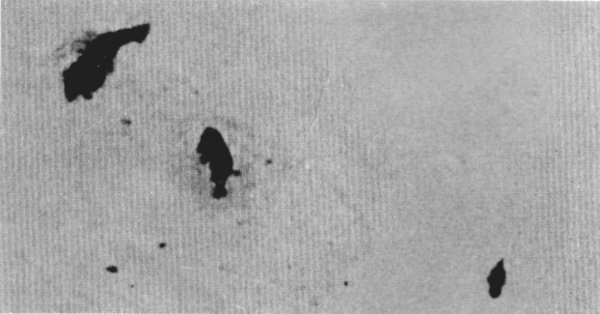
Figure 11.—On frozen lakes, wolves often seem
to have the advantage over deer, such as in
this case where the wolf (center) has just
killed a deer and is trying to discourage a raven
from joining him in the feed. (Photo courtesy
of L. D. Frenzel.)
Stenlund (1955, p. 44) reported as follows on
years of low snowfall, the opposite condition,
which demonstrated the same relationship between
snow depth and kills on lakes: "The
winters of 1951-52 and 1952-53 were abnormally
mild with little early snow. As a result, few
wolf-killed deer appeared on the lakes and most
deer attempted to outrun wolves in the woods."
Thus it appears that extreme snow conditions
in our study area increase the vulnerability of
deer to wolf predation in three ways: (1) by
causing a decline in the health and nutritional
state of some members of the deer population;
(2) by hindering the escapability of the deer;
and (3) by causing deer to congregate on frozen
lakes where wolves have the advantage in
running.
SUMMARY
During the winters of 1966-67, 1967-68, and
1968-69, the interactions of wolves (Canis lupus)
and white-tailed deer (Odocoileus virginianus)
were observed in northeastern Minnesota from
aircraft. Snow depth and supporting ability were
also measured during these winters, and the ability
of wolves to capture deer was compared for
a period of usual snow conditions versus a period
of extreme snow conditions.
It was found that during February and March
1969, when snow remained from 2.5 to 3.9 feet
deep and failed to support running deer, wolves
were able to capture deer more easily. This was
evidenced by kills that were left partly or completely
uneaten, and by a higher rate of predation
by radiotagged wolves and their associates.
Although both wolves and deer floundered
in the extremely deep snow, the relatively lighter
weight-load-on-track of wolves evidently gave[Pg 59]
them a greater advantage than under the usual
snow conditions, when wolves were observed
floundering more than deer. This factor, plus a
decline in the health and vigor of some segments
of the deer population and a tendency for deer
to congregate on frozen lakes, where wolves have
an advantage, help explain the increased vulnerability
of deer to wolf predation during the
winters of deep snow.
ACKNOWLEDGMENTS
This study was supported by Macalester
College, the Minnesota Department of Conservation,
the USDA Forest Service, the U.S.
Bureau of Sport Fisheries and Wildlife, and the
New York Zoological Society. Pilots John Winship,
Pat Magie, Jack Burgess, and Don Murray
flew the observation planes during radiotracking.
Miss Elizabeth Dayton, Mr. Wallace C. Dayton,
and the Quetico-Superior Foundation, all of Minneapolis,
financed Mech during the writing of
this report.
Thanks are also due L. J. Verme, J. P.
Kelsall, and J. M. Peek for their helpful reviews.
LITERATURE CITED
Foromozov, A. N. 1946. The snow cover as an
environment factor and its importance in the
life of mammals and birds. (Moskovskoe
obshchestvo ispytatelei priroda) Materialy k
poznaniyu fauny i flory SSSR, Otdel. Zool. n.
5 (XX). (Translation from Russian published
by Boreal Institute, Univ. Alberta, Edmonton,
Alberta.)
Kelsall, J. P. 1968. The caribou. Can. Wildl.
Serv. Monog. 3, 340 p.
Kelsall, J. P. 1969. Structural adaptations of
moose and deer for snow. J. Mammal. 50:
302-310.
Mech, L. D. 1966. Hunting behavior of wolves
in Minnesota. J. Mammal. 47: 347-348.
Mech, L. D. 1970. The wolf: the ecology and
behavior of an endangered species. 389 p.
New York: Natural History Press, Doubleday.
Nasimovich, A. A. 1955. The role of the regime
of snow cover in the life of ungulates in the
U.S.S.R. Moskva, Akademiya Nauk SSSR.
403 p.
Pimlott, D. H., Shannon, J. A., and Kolenosky,
G. B. 1969. The ecology of the timber wolf
in Algonquin Provincial Park. Out. Dep. Lands
and Forests Res. Rep. (Wildl.) 87, 92 p.
Rutter, R. J., and Pimlott, D. H. 1968. The
world of the wolf. 202 p. Philadelphia and
New York: J. B. Lippincott Co.
Stenlund, M. H. 1955. A field study of the
timber wolf (Canis lupus) on the Superior
National Forest, Minnesota. Minn. Conserv.
Dep. Tech. Bull. 4, 55 p.
Verme, L. J. 1968. An index of winter severity
for northern deer. J. Wildl. Manage. 32:
566-574.
[Pg 60]
THE POSSIBLE OCCURRENCE OF THE GREAT PLAINS WOLF
IN NORTHEASTERN MINNESOTA
L. David Mech and L. D. Frenzel, Jr.
The timber wolf (Canis lupus) of northeastern
Minnesota occupies an area within the range
given by Goldman (1944) for the eastern timber
wolf (C. l. lycaon Schreber). However, this area
is within 150 miles of the eastern edge of the
former range of the Great Plains wolf (C. l.
nubilus Say), and there is some question as to
whether the Minnesota wolf is really an intergrade
between these two subspecies. Writing of
nubilus, Goldman (1944, p. 444) stated: "Specimens
from eastern Minnesota and Michigan seem
more properly referable to lycaon, but relationship
to nubilus is shown in somewhat intermediate
characters."
In describing lycaon as basically a gray wolf,
Goldman made no mention of the occurrence of
black or white color phases in that subspecies.
However, in discussing nubilus, Goldman (1944,
p. 442) wrote the following: "Many color variations
are presented. Individuals may be nearly
white at any season, except for a sprinkling of
black hairs over the back, a small, narrow, but
conspicuous, black patch over the tail gland, and
a more or less distinctly black tip. Black individuals
may occur in the same litter with those
normally colored." Goldman also referred to
nubilus as "now probably extinct."

Figure 1.—A few wolves observed in the study
area were jet black. (Photo courtesy of L. D.
Mech.)
In the eastern part of the range of lycaon,
color phases other than gray appear to be rare
as Rutter and Pimlott (1969, p. 188) attest: "The
uniformity of the color of timber wolves in many
areas is evidenced by the work in Algonquin
Park, in Ontario. There, over the past eight
years, dozens of packs have been observed from
the air. However, we have never been able to
discriminate between any of them on the basis
of the color variation of individual animals."
Thus it seems significant to report on incidences
of black and white color phases in wolves
that we have observed in northeastern Minnesota
during some 480 hours of flying associated
with wolf research (Mech et al., p. 1). The
observations took place in the Superior National
Forest, in northern Cook, Lake, and St. Louis
Counties during the winters of 1966-67, 1967-68,
and 1968-69. A total of 309 sightings were made
of wolves that could be classified by color; of
these, 11 (3.6 percent) were jet black (fig. 1)
and two (0.6 percent) were creamish white, with
the cream color the most intense on the back.
No doubt some of the grays, and perhaps the
blacks and whites, were repeated observations,
but the figures should provide a reasonable approximation
of the incidence of these color phases
in this area. All black or white animals except
one were observed with gray wolves (table 1 and
fig. 2).
A number of black wolves, and a few white
wolves, have been seen by other observers, all
in the three counties listed earlier. To gain some
idea of the past incidence of these color phases
in the same general area, we asked Conservation
Officers Robert Hodge, Robert Jacobsen, and
Frank Baltich of the Ely, Minnesota, area about
the numbers of each phase that they took before
1960. They reported killing an approximate total
of 580 wolves, of which four were black and three
were white or creamish white.
[Pg 61]
Table 1.—Observations of wolves of black and white color phases
| Date | Location | Color combinations within each pack | |
|---|---|---|---|
| Feb. 24, 1967 | T64N-R8W-S1 | Vera Lake | 3 grays; 1 black; 1 white |
| Mar. 4, 1967 | T63N-R9W-S27 | Lake Two | 3 grays; 2 blacks |
| Dec. 18, 1968 | T63N-R8W-S35 | Lake Insula | 2 grays; 2 blacks[37] |
| Jan. 17, 1969 | T65N-R8W-S27 | Carp Lake | 1 gray; 1 white |
| Feb. 1, 1969 | T63N-R8W-S13 | Lake Insula | 4 blacks; 2 grays[38] |
| Feb. 5, 1969 | T63N-R8W-S8 | Benezie Lake | 1 black |
| Feb. 6, 1969 | T63N-R10W-S33 | Clear Lake | 3 grays; 1 black |
FOOTNOTES:
[37] These animals were near the shore of the lake, so others may have
been inland where they could not be seen.
[38] This group might well have been the same as that seen on Dec. 18,
1968.
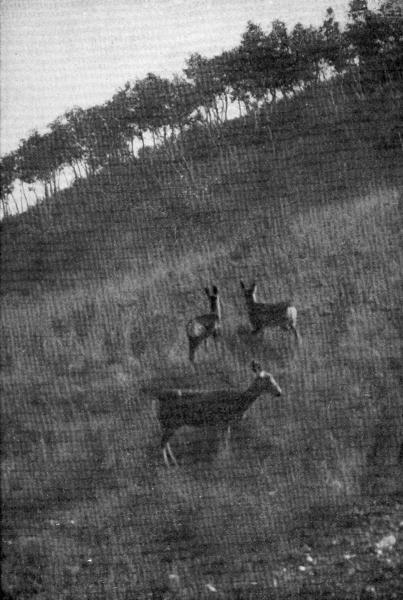
Figure 2.—A pack of four blacks with two grays (first and third). (Photo
courtesy of John Winship.)
[Pg 62]
Because black and white color phases have
rarely if ever been reported for lycaon, yet were
well known for nubilus, it is not unreasonable to
conclude that the race of wolves now occupying
northeastern Minnesota does show strong nubilus
influence. Goldman examined the skulls only of
10 Minnesota specimens assignable to lycaon and
only one referable to nubilus. Because wolves
in the known range of nubilus are thought to
be extinct, and because the animals in northeastern
Minnesota are legally unprotected and
subject to a control program, it seems highly
desirable that the question of their taxonomy
be studied intensively while specimens are still
available.
ACKNOWLEDGMENTS
This study was supported by Macalester
College, the New York Zoological Society, the
Minnesota Department of Conservation, the U.S.
Bureau of Sport Fisheries and Wildlife, and the
USDA Forest Service. Mr. Wallace C. Dayton
and Miss Elizabeth Dayton, and the Quetico-Superior
Foundation, all of Minneapolis, financed
Mech during the preparation of this paper. We
would also like to thank Dr. J. L. Paradiso, Dr.
H. L. Gunderson, and Mr. M. H. Stenlund for
reviewing this manuscript.
LITERATURE CITED
Goldman, E. A. 1944. The wolves of North
America, Part II. Classification of Wolves.
p. 389-636. Washington, D.C.: The Amer.
Wildl. Inst.
Pimlott, D. H., Shannon, J. A., and Kolenosky,
G. B. 1969. The ecology of the timber wolf
in Algonquin Provincial Park. Ont. Dep.
Lands and Forests Res. Pap. (Wildl.) 87, 94 p.
[Pg 63]
SOME RECENT RESEARCH PAPERS
OF THE
NORTH CENTRAL FOREST EXPERIMENT STATION
Tree Improvement Opportunities in the North-Central States
Related to Economic Trends, A Problem Analysis, by David
H. Dawson and John A. Pitcher. USDA Forest Serv. Res.
Pap. NC-40, 30 p., illus. 1970.
Relation Between the National Fire Danger Spread Component
and Fire Activity in the Lake States, by Donald A. Haines,
William A. Main, and Von J. Johnson. USDA Forest Serv.
Res. Pap. NC-41, 8 p., illus. 1970.
Thinning and Fertilizing Red Pine to Increase Growth and Cone
Production, by John H. Cooley. USDA Forest Serv. Res.
Pap. NC-42, 8 p., illus. 1970.
The Impact of Estimation Errors on Evaluations of Timber Production
Opportunities, by Dennis L. Schweitzer. USDA Forest
Serv. Res. Pap. NC-43, 18 p., illus. 1970.
User Evaluation of Campgrounds on Two Michigan National
Forests, by Robert C. Lucas. USDA Forest Serv. Res. Pap.
NC-44, 15 p., illus. 1970.
System Identification Principles in Studies of Forest Dynamics,
by Rolfe A. Leary. USDA Forest Serv. Res. Pap. NC-45,
38 p., illus. 1970.
Skiing in the Great Lakes State: the Industry and the Skier, by
William A. Leuschner. USDA Forest Serv. Res. Pap. NC-46,
42 p., illus. 1970.
Proceedings of the Ninth Lake States Forest Tree Improvement
Conference, August 22-23, 1969. USDA Forest Serv. Res.
Pap. NC-47, 34 p. 1970.
A Water Curtain for Controlling Experimental Forest Fires, by
Von J. Johnson. USDA Forest Serv. Res. Pap. NC-48, 7 p.,
illus. 1970.
Wildness Ecology: A Method of Sampling and Summarizing Data
for Plant Community Classification, by Lewis F. Ohmann
and Robert R. Ream. USDA Forest Serv. Res. Pap. NC-49,
14 p., illus. 1970.
ABOUT THE FOREST SERVICE....
As our Nation grows, people expect and need more from their forests—more
wood; more water, fish, and wildlife; more recreation and natural beauty; more
special forest products and forage. The Forest Service of the U.S. Department
of Agriculture helps to fulfill these expectations and needs through three major
activities:

- Conducting forest and range research at over
75 locations ranging from Puerto Rico to
Alaska to Hawaii. - Participating with all State forestry agencies
in cooperative programs to protect, improve,
and wisely use our Country's 395 million acres
of State, local, and private forest lands. - Managing and protecting the 187-million acre
National Forest System.
The Forest Service does this by encouraging use of the new knowledge that
research scientists develop; by setting an example in managing, under sustained
yield, the National Forests and Grasslands for multiple use purposes; and by
cooperating with all States and with private citizens in their efforts to achieve
better management, protection, and use of forest resources.
Traditionally, Forest Service people have been active members of the communities
and towns in which they live and work. They strive to secure for all,
continuous benefits from the Country's forest resources.
For more than 60 years, the Forest Service has been serving the Nation as a
leading natural resource conservation agency.
Transcriber's Notes
This is a compilation of four separate reports, each having their own table and figure numbers.
I have retained the original table and figure numbers due to all the references made to them
within the text. However I did reindex the footnotes for the complete compilation. I made minor
punctuation corrections, modified the table formats, moved some illustrations, and made the
following typo corrections:
Table of Contents: Changed "Occurence" to "Occurrence".
Originally: The Possible Occurence of the Great Plains Wolf in Northeastern Minnesota
Page 5: Added missing parenthesis after "individuals".
Originally: the same color (with the exception of a few black or white individuals (see Mech and Frenzel, page 60)
Page 27, Deleted repeated word "the".
Originally: When still on the the ice about 15 feet from shore,
Page 34, Literature Cited: Changed "Vegetatation" to "Vegetation".
Originally: Ohmann, L. F., and Ream, R. R. 1969 Vegetatation studies in the BWCA
Page 37: Changed "repreductive" to "reproductive".
Originally: lungs, liver, kidneys, repreductive tracts
Page 40: Changed "wildnerness" to "wilderness".
Originally: while in the wildnerness more males were taken
Page 41: Changed "decidous" to "deciduous".
Originally: The deciduous first incisors of fawns and the decidous
Page 42: Changed "end" to "and".
Originally: from wolf-killed deer end examined grossly in the field
Page 42, Figure 9: Changed "discoverd" to "discovered".
Originally: A permanent first premolar (arrow) was discoverd in M-8.
Page 47: Changed "wildnerness" to "wilderness".
Originally: not surprising that in the wildnerness area
Page 57, Footnote 36: Deleted duplicate "to".
Originally: Personal correspondence to to L. D. Mech, Oct. 10, 1969.
Page 58: Changed "diffference" to "difference".
Originally: Nevertheless, with extremely deep snow, the diffference
Page 59, Literature Cited: Changed "roll" to "role".
Originally: Nasimovich, A. A. 1955. The roll of the regime of snow
Featured Books

Selections from the Writings of Lord Dunsany
Lord Dunsany
lid black; /* a thin black line border.. */ padding: 6px; /* ..spaced a bit out from the gr...

Tales of War
Lord Dunsany
fields. Foreigners they used to call them. Kept very much to themselves, did the Daleswood peop...

North American Yellow Bats, 'Dasypterus,' and a List of the Named Kinds of the Genus Lasiurus Gray
E. Raymond Hall and J. Knox Jones
Gray, also occur only in the New World except that the hoary bat has an endemic subspecies in the Ha...

Natural History of the Prairie Vole (Mammalian Genus Microtus)
E. W. Jameson
cundity144Size of litters146The breeding season147Summary149Literature Cited150[Pg 128]INTRODUCTIONT...

The Free Rangers: A Story of the Early Days Along the Mississippi
Joseph A. Altsheler
WHITE STALLION214XIV.NEW ORLEANS230XV.BEFORE BERNARDO GALVEZ251XVI.IN PRISON271XVII.THE FLAW IN THE ...

Four Young Explorers; Or, Sight-Seeing in the Tropics
Oliver Optic
Volume of Third Series Four Young ExplorersORSIGHT-SEEING IN THE TROPICSBYOLIVER OPTICAUTHOR OF"THE...

Psmith in the City
P. G. Wodehouse
fe, it was only appropriate that he should make a dramatic entry into it. This he did by walkin...

De la terre à la lune, trajet direct en 97 heures 20 minutes (French)
Jules Verne
degré de perfection, mais elles offrirent desdimensions inusitées, et eurent par conséquent des ...
Browse by Category
Join Our Literary Community
Subscribe to our newsletter for exclusive book recommendations, author interviews, and upcoming releases.
Comments on "Ecological Studies of the Timber Wolf in Northeastern Minnesota" :